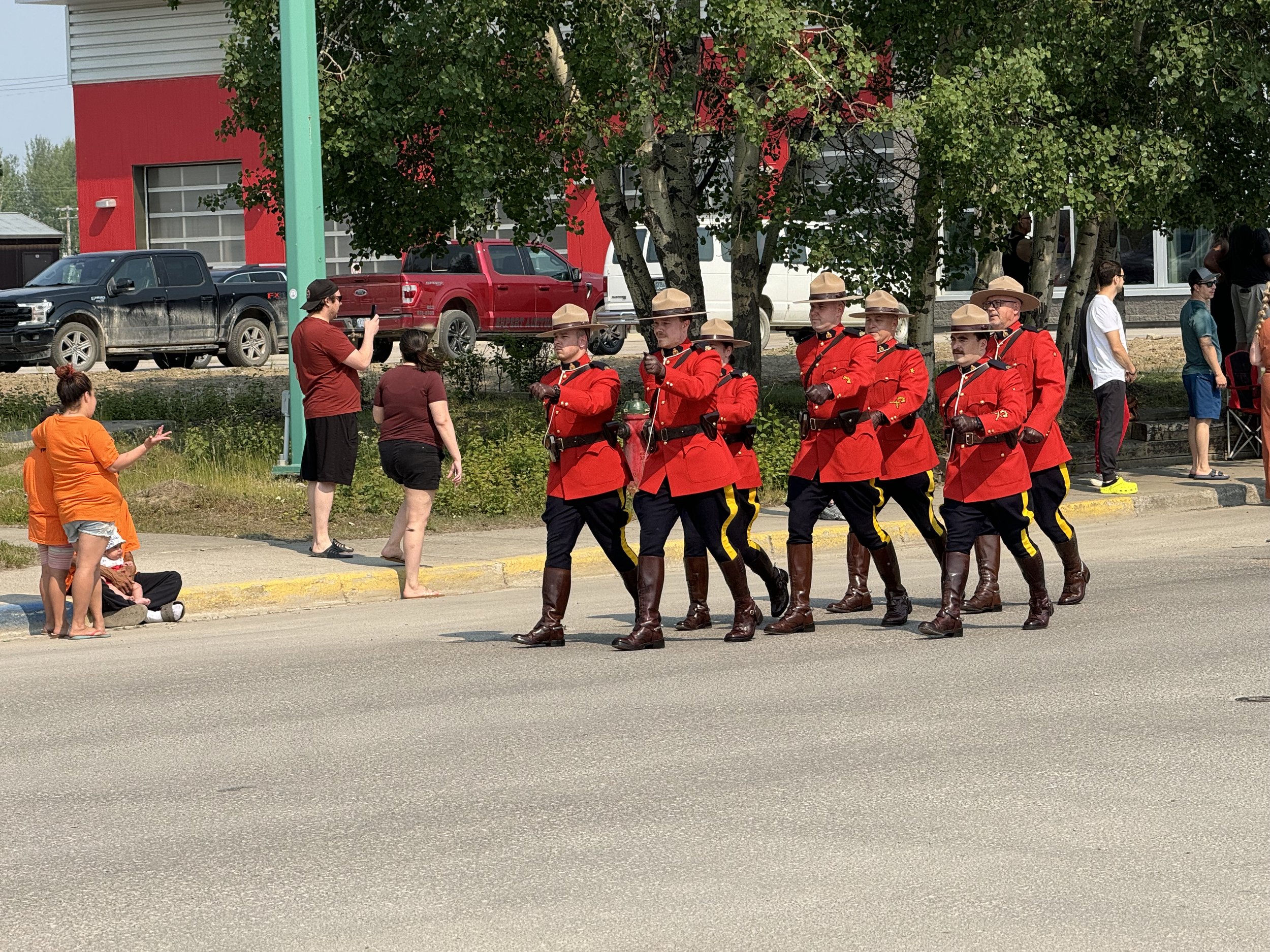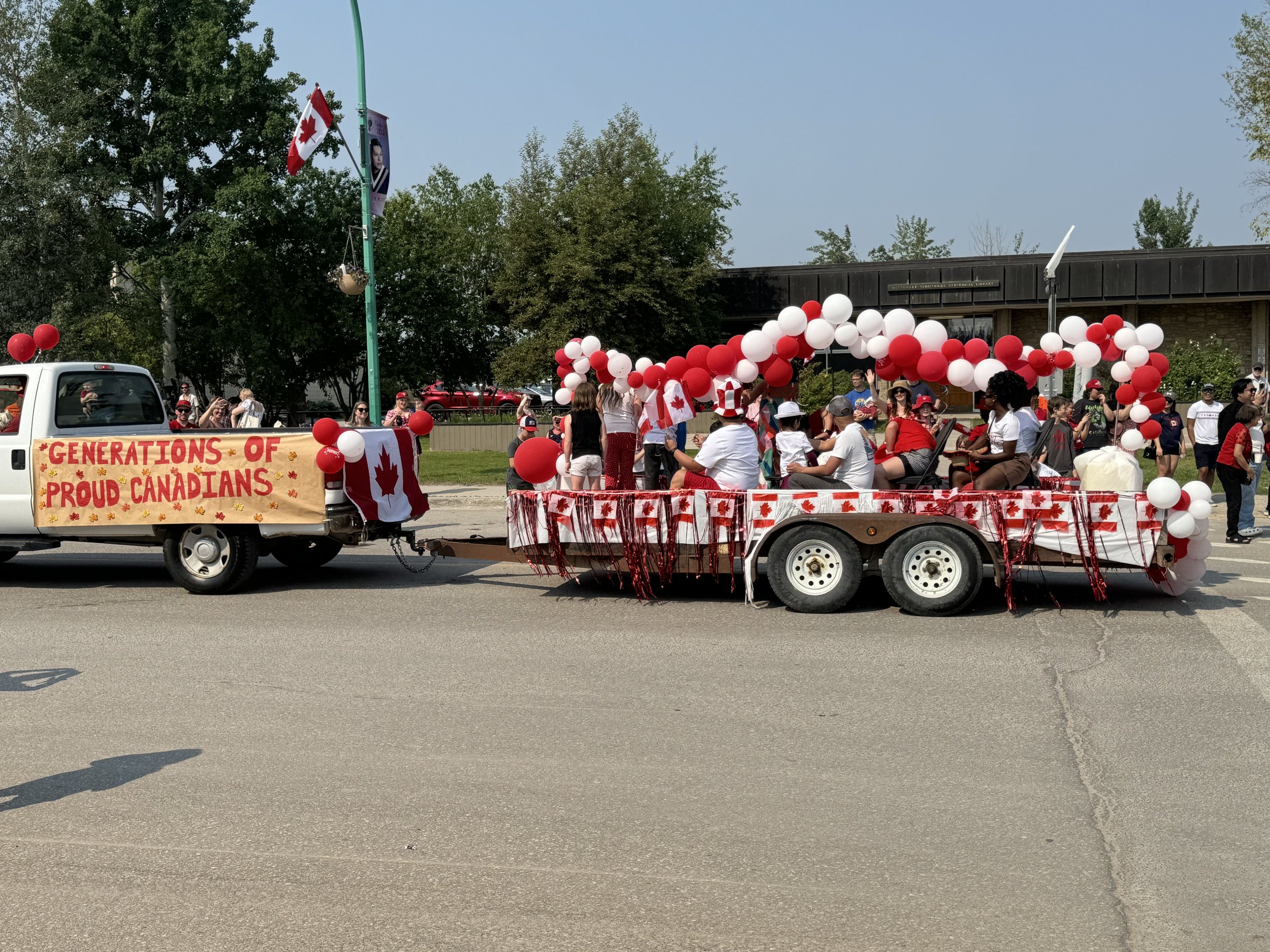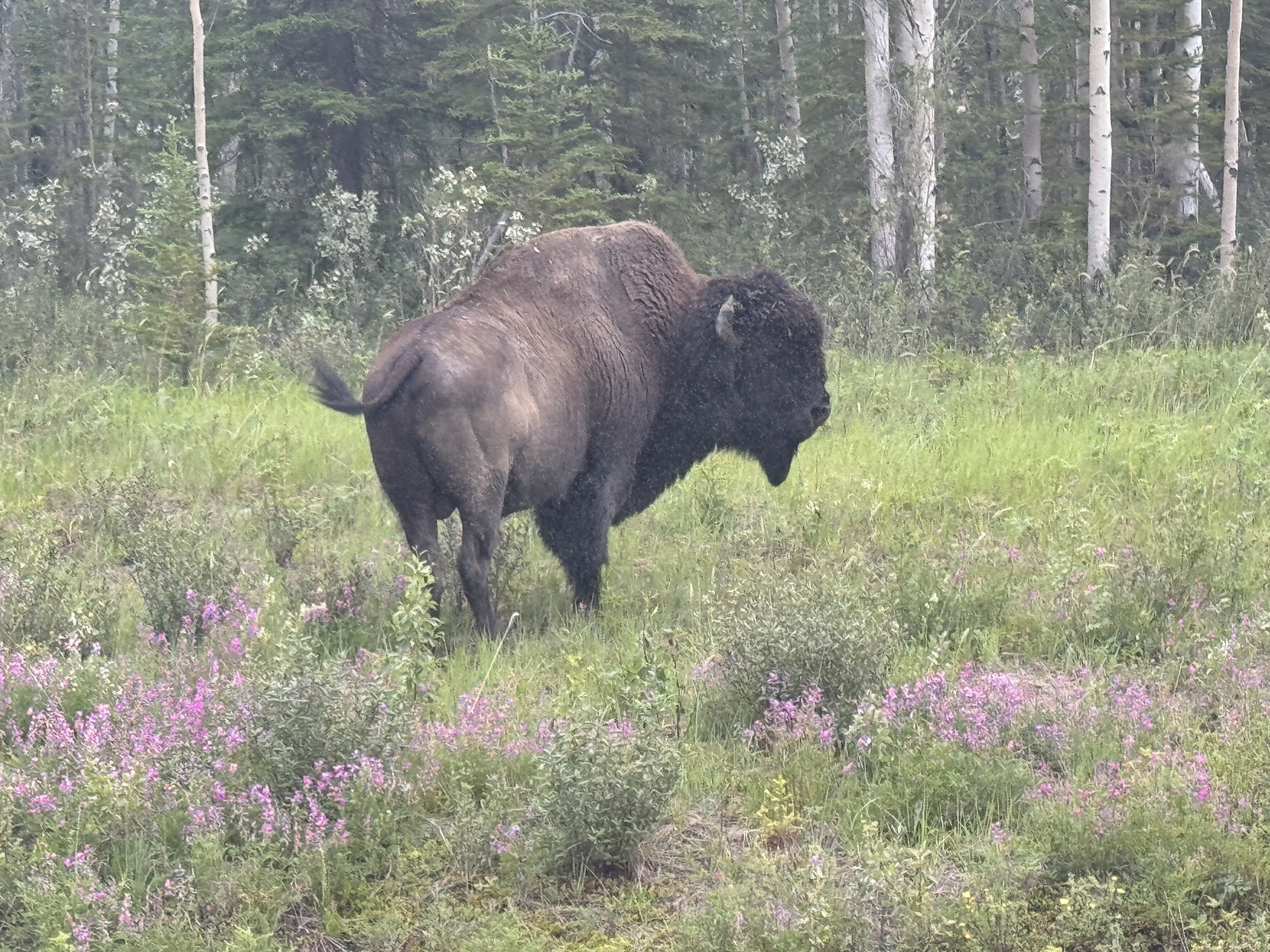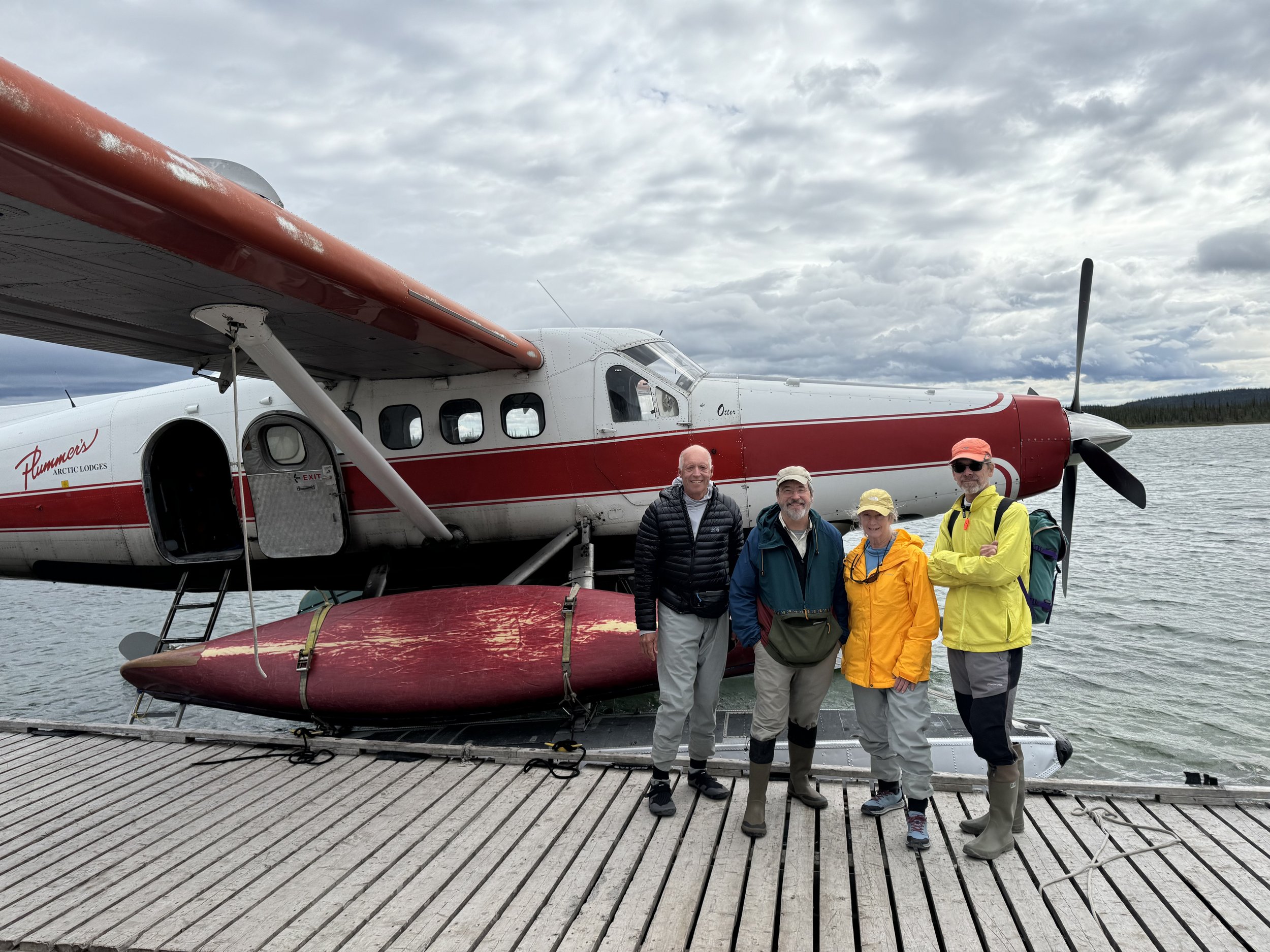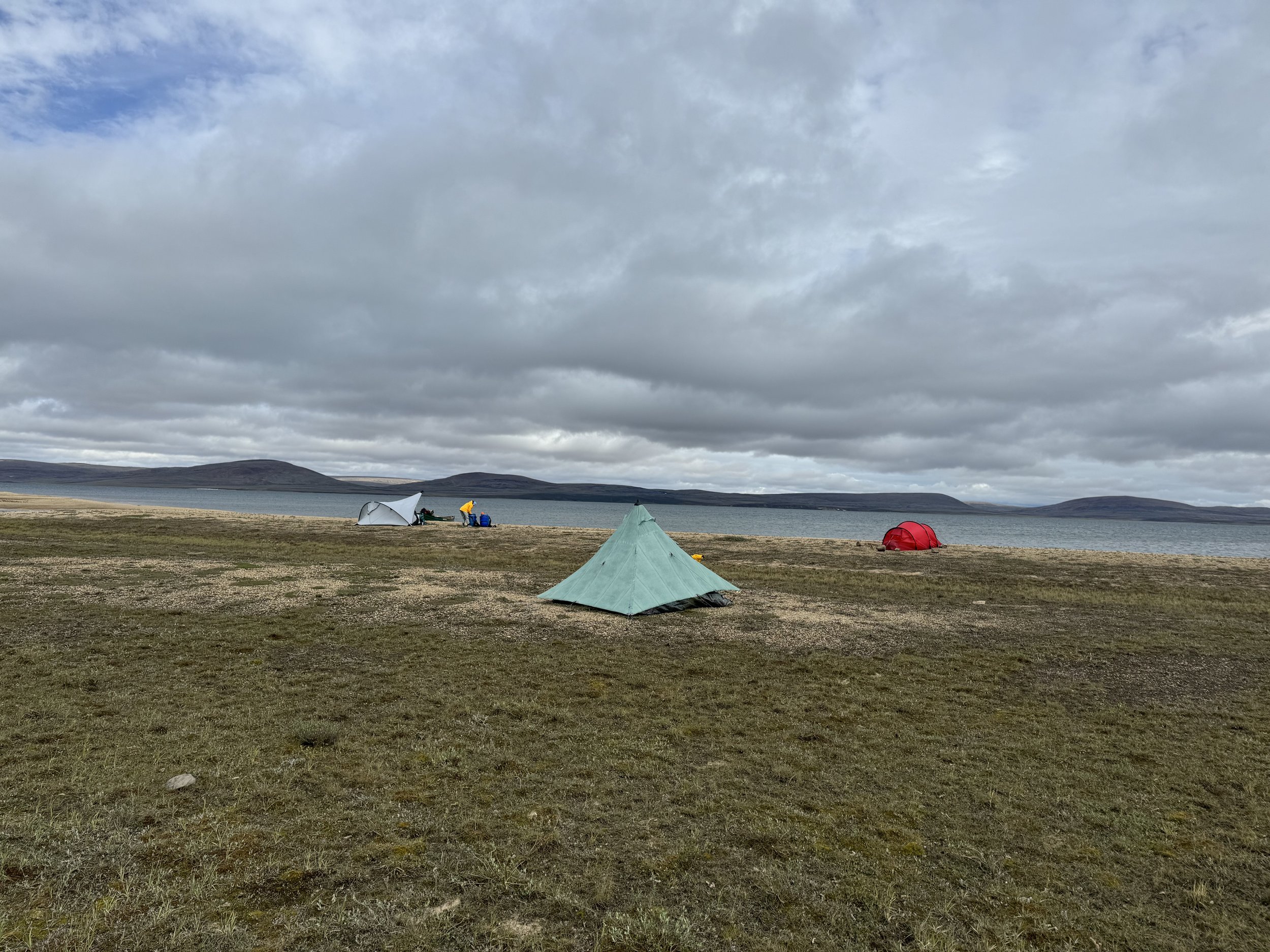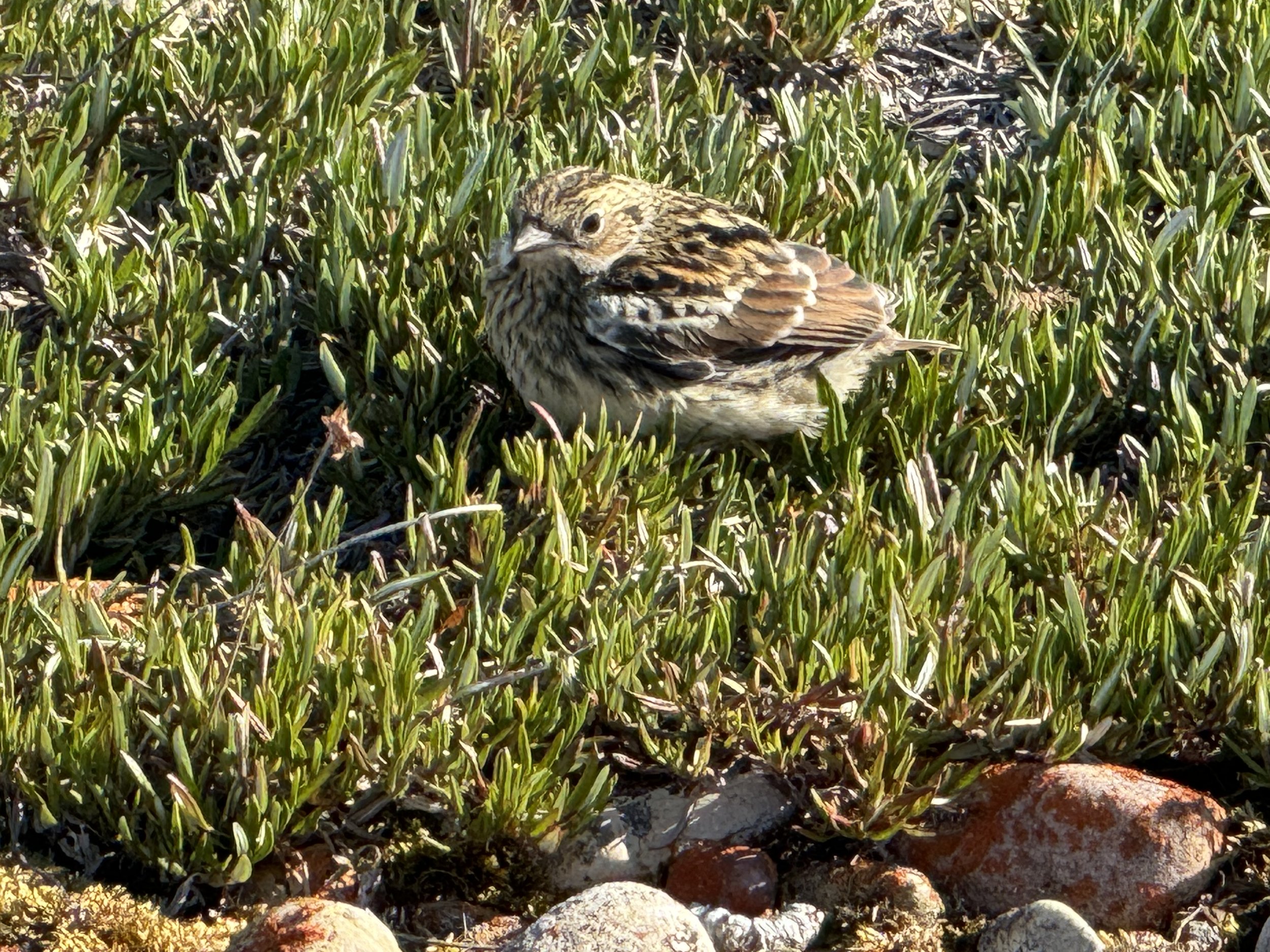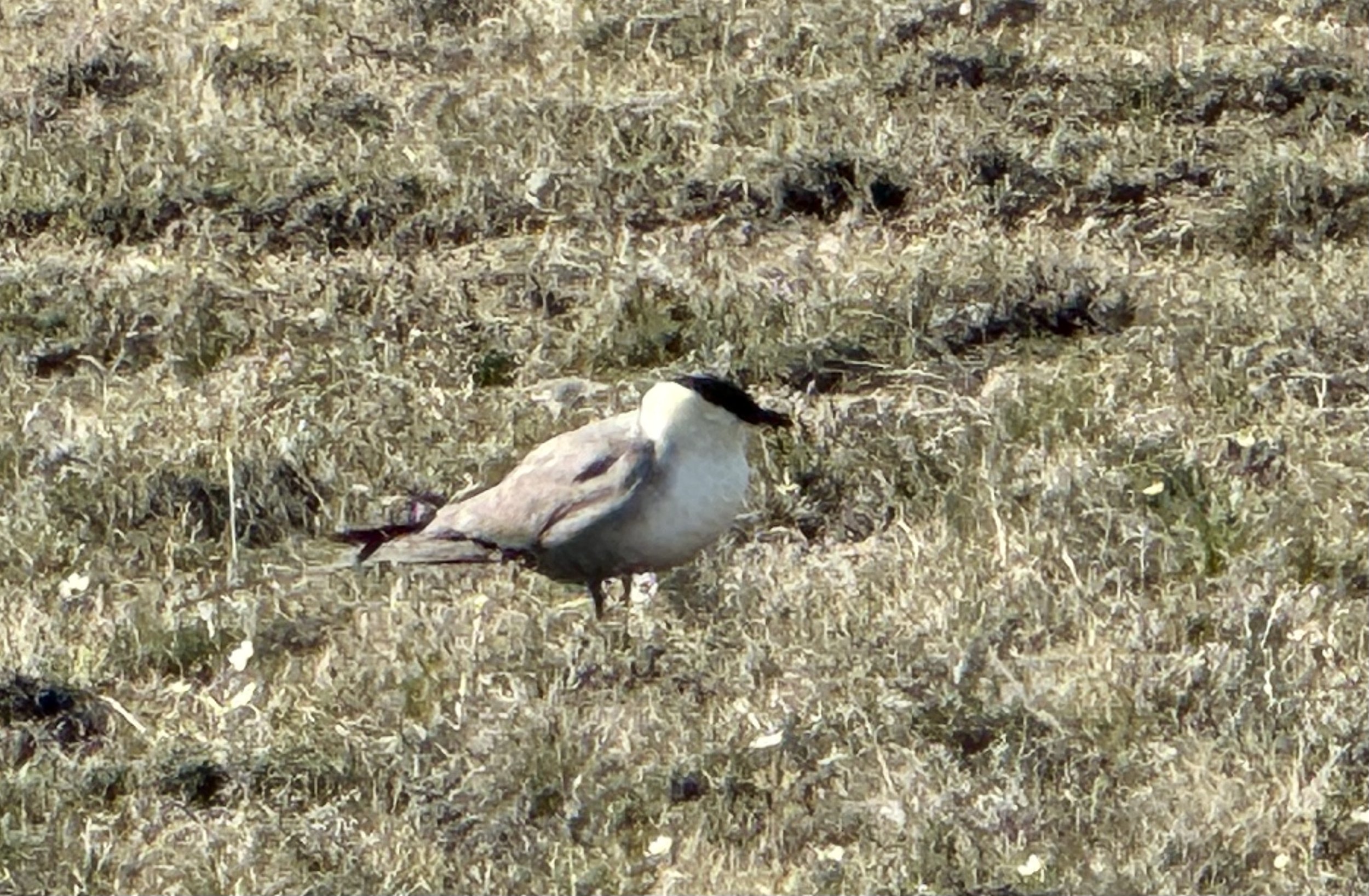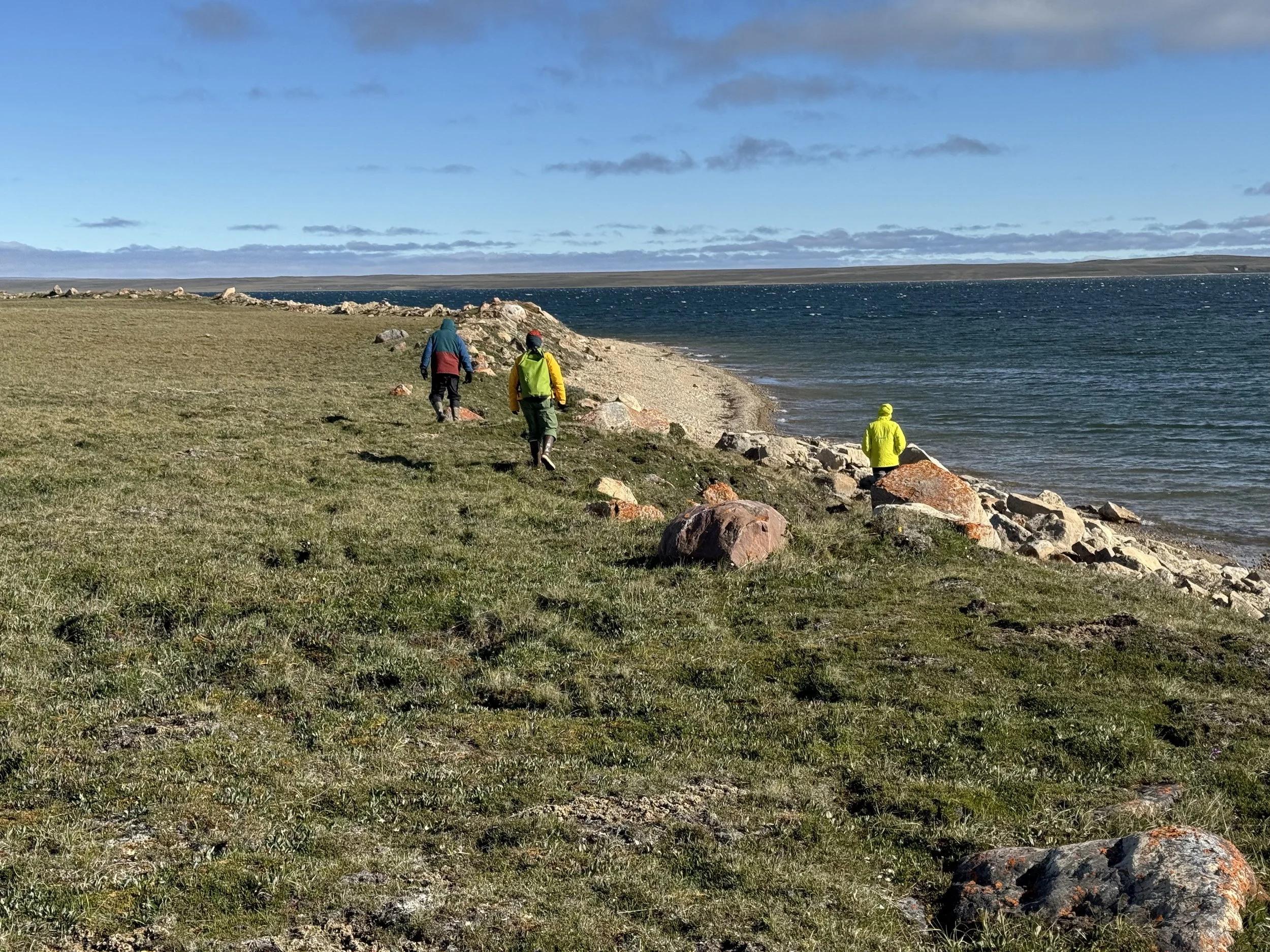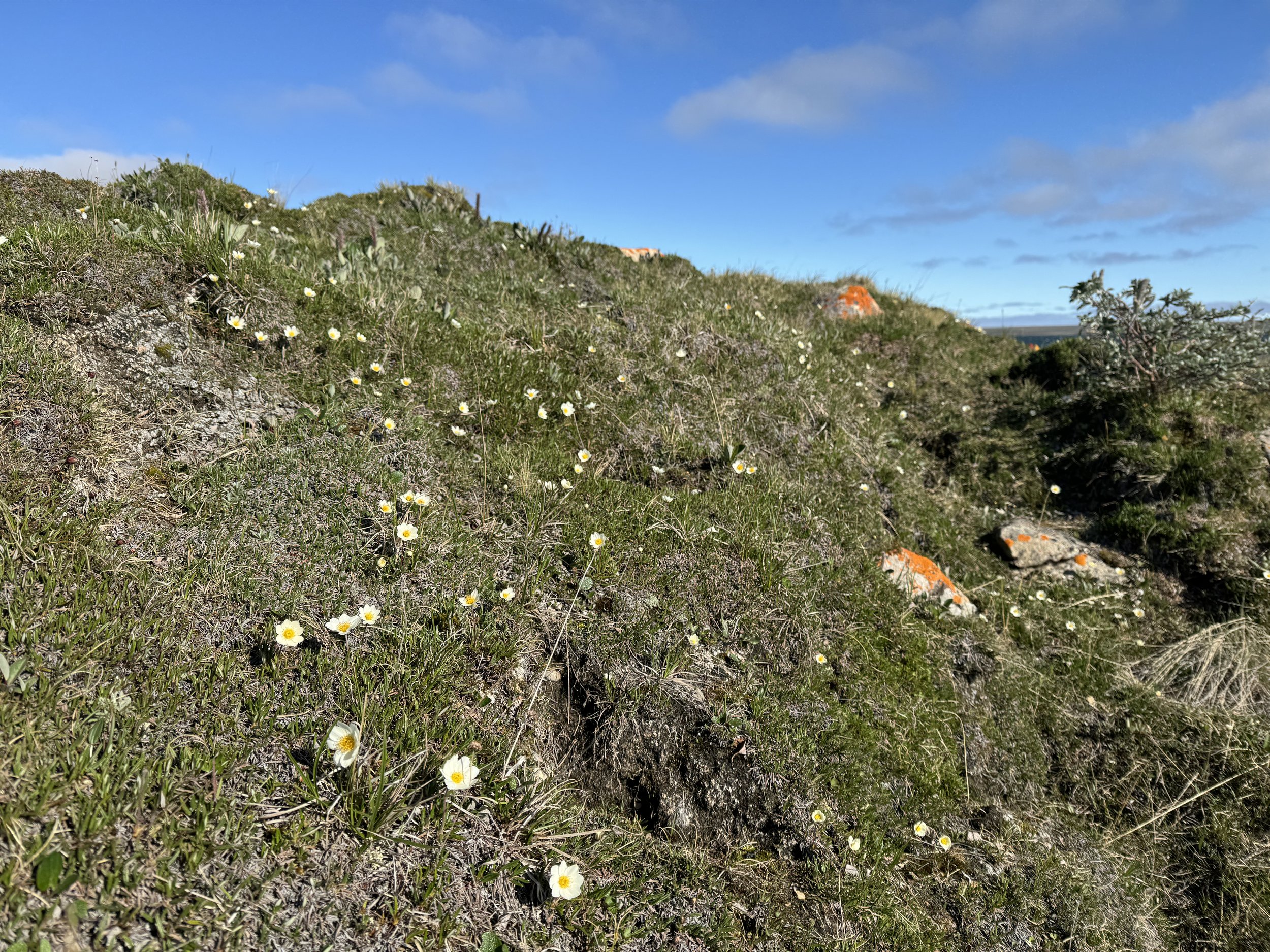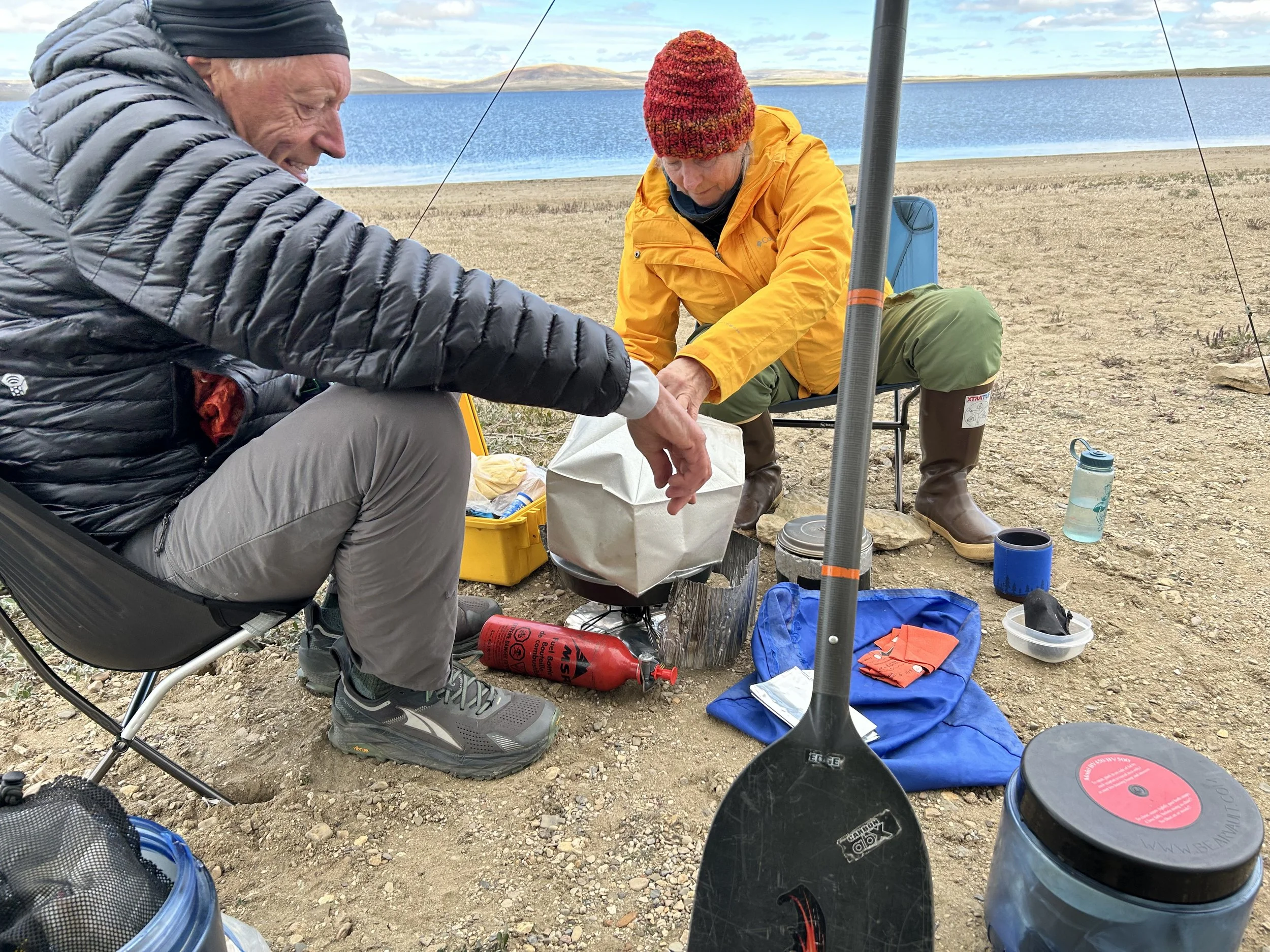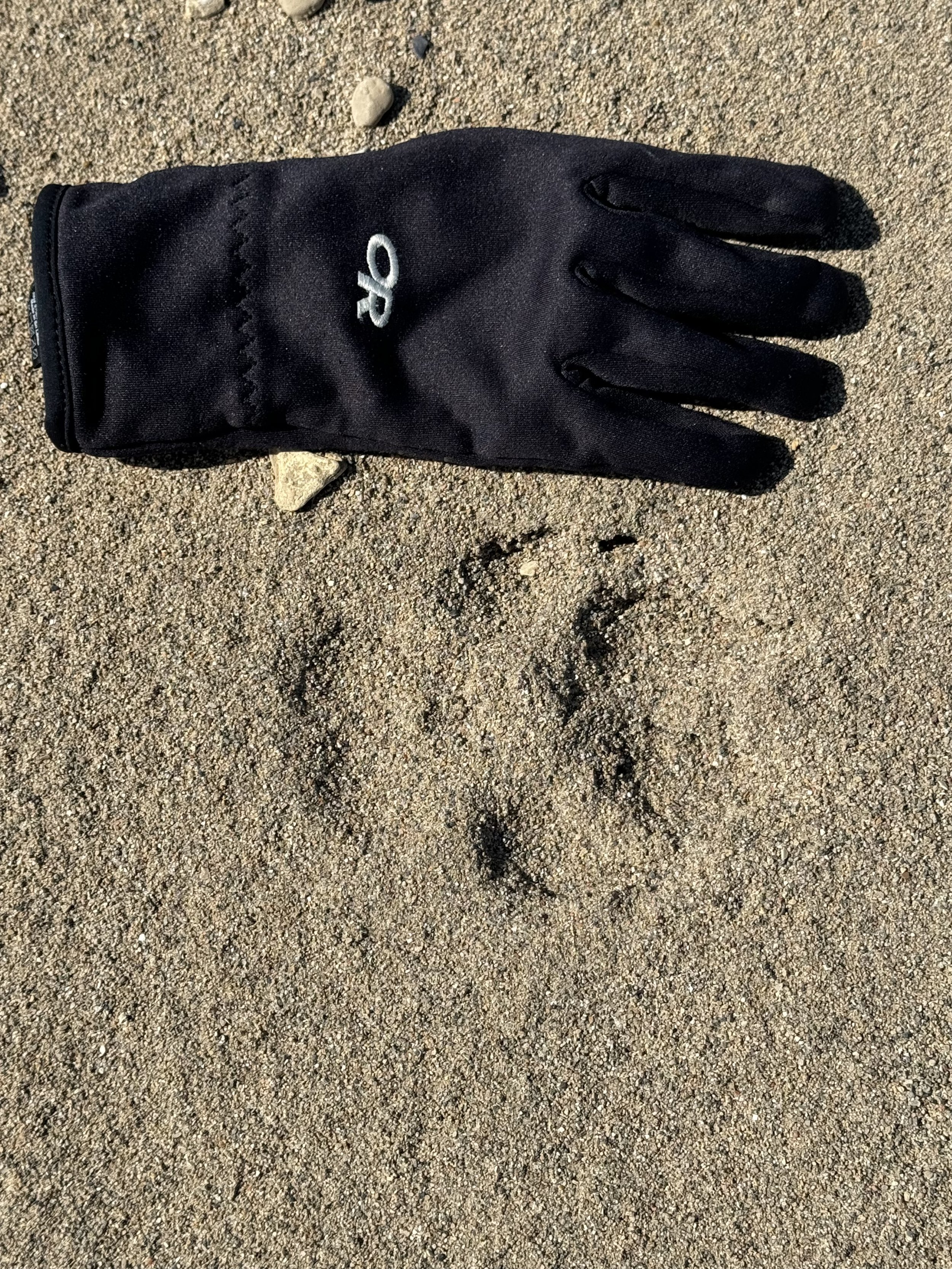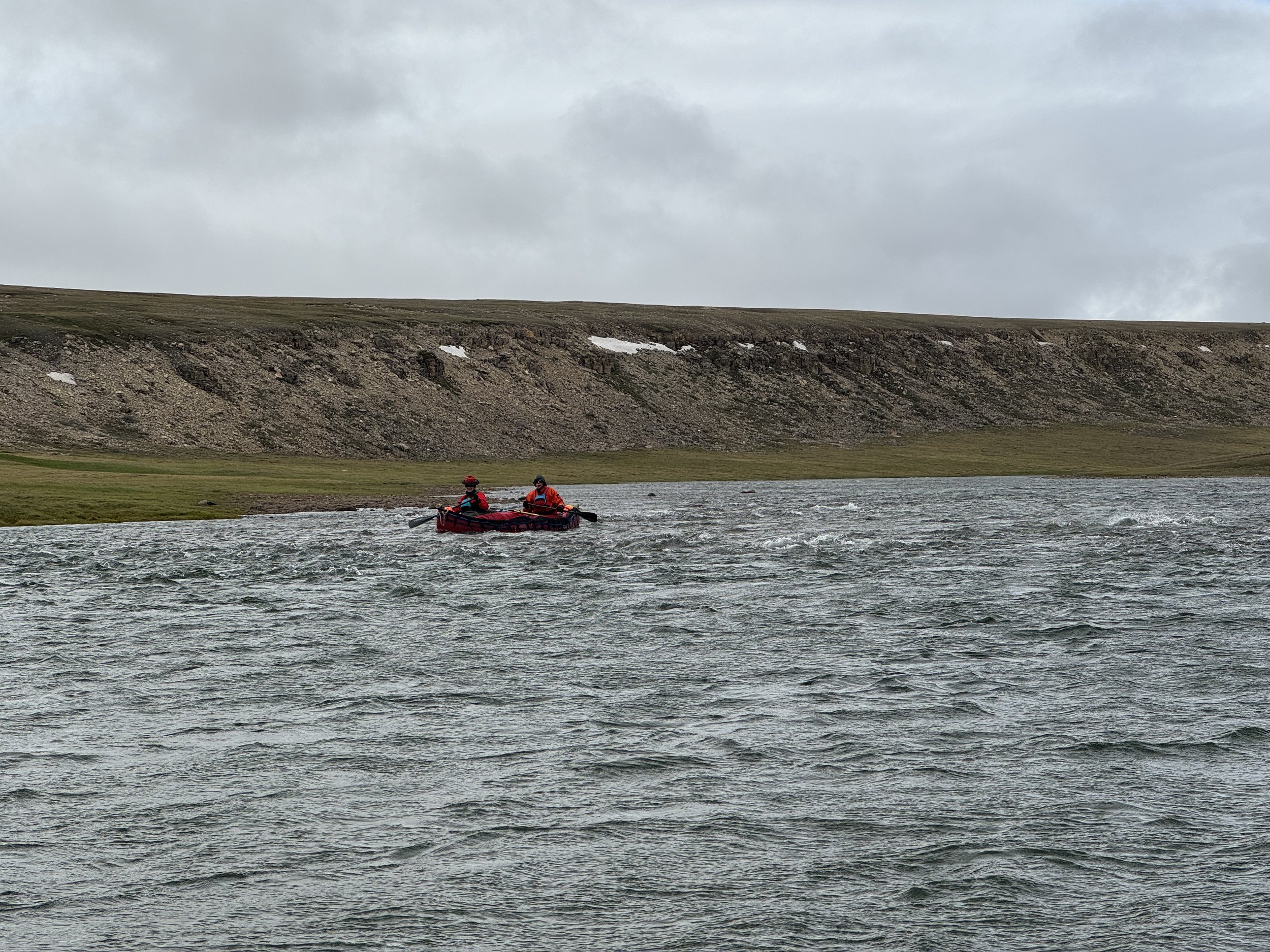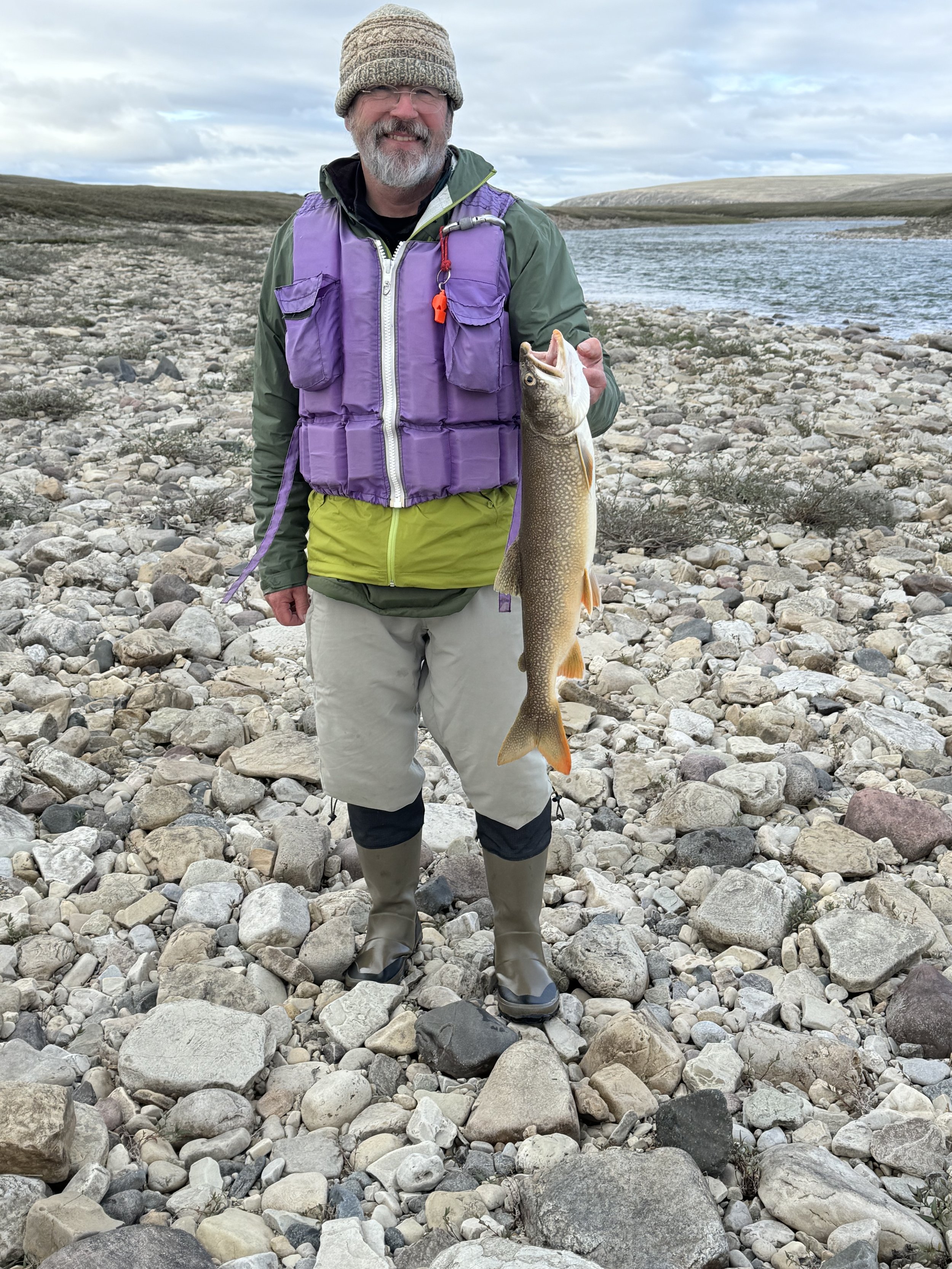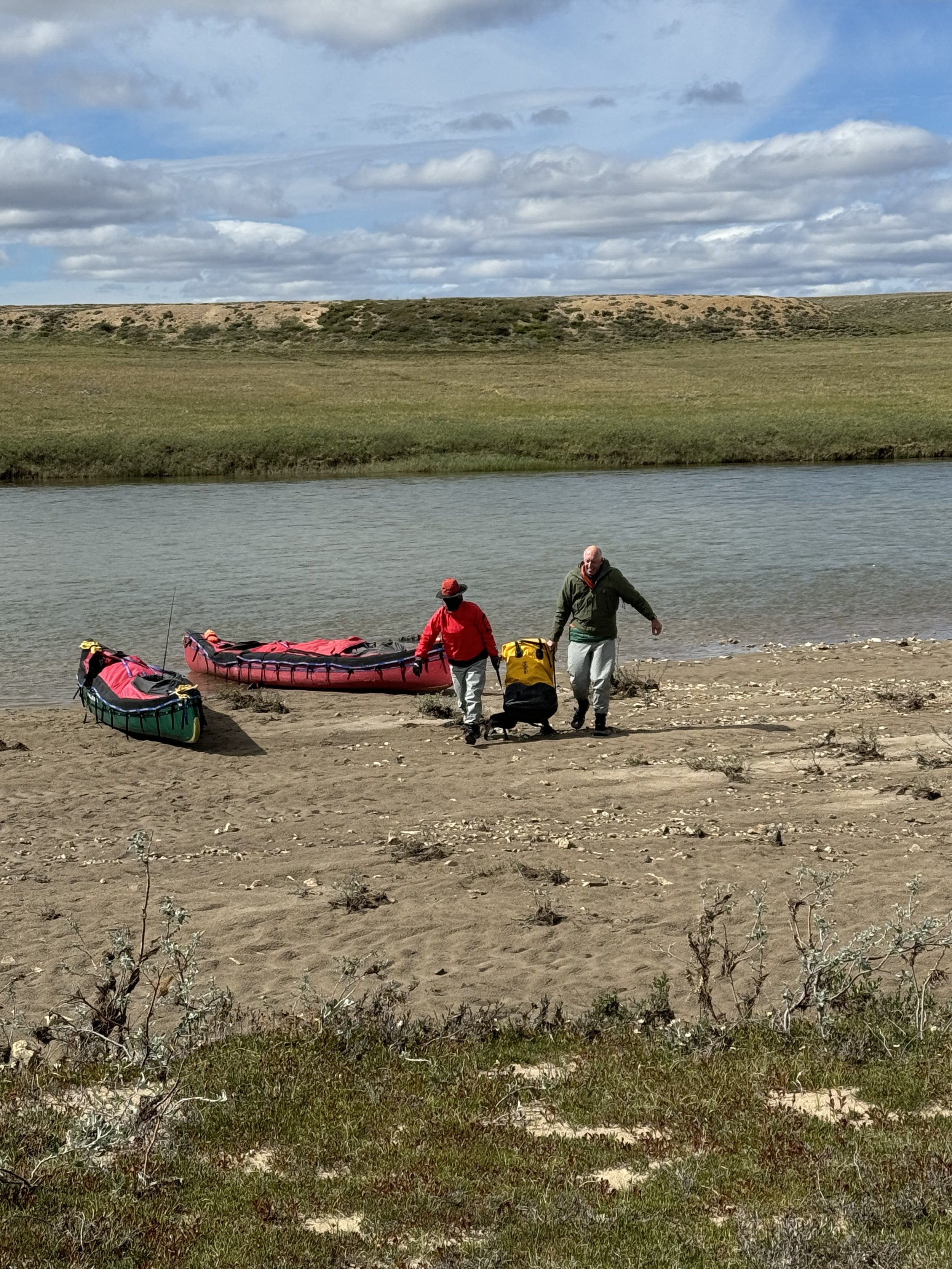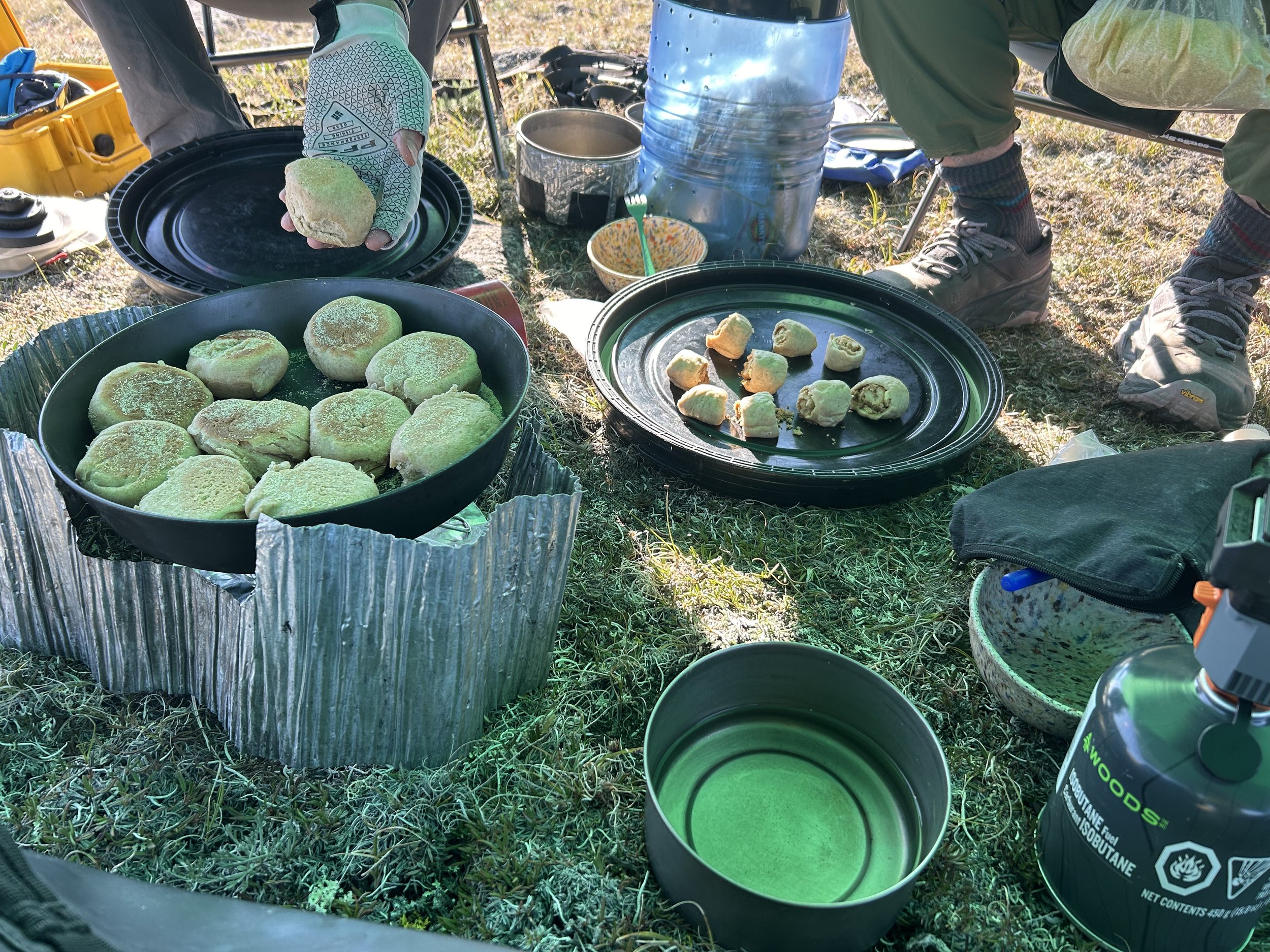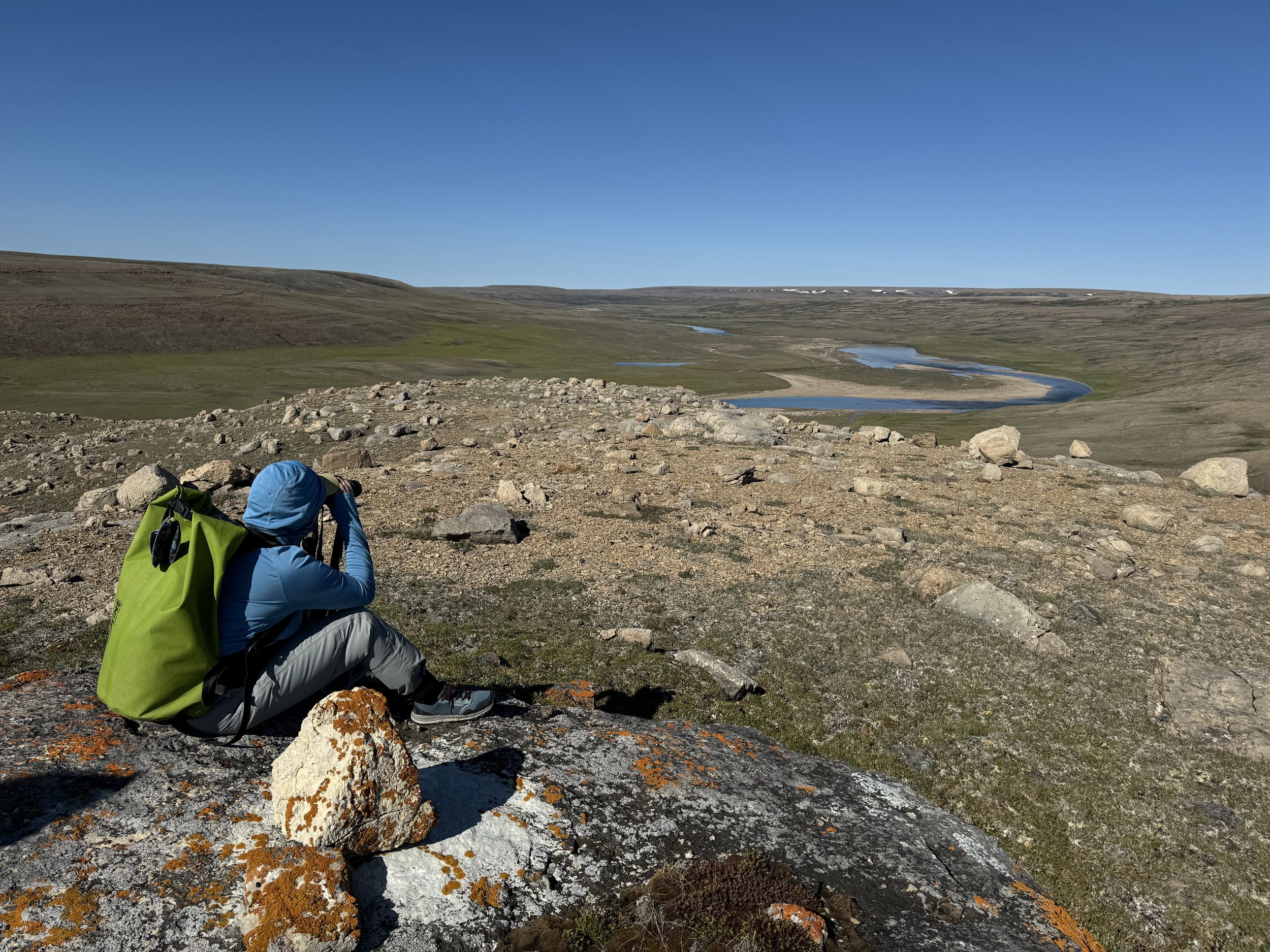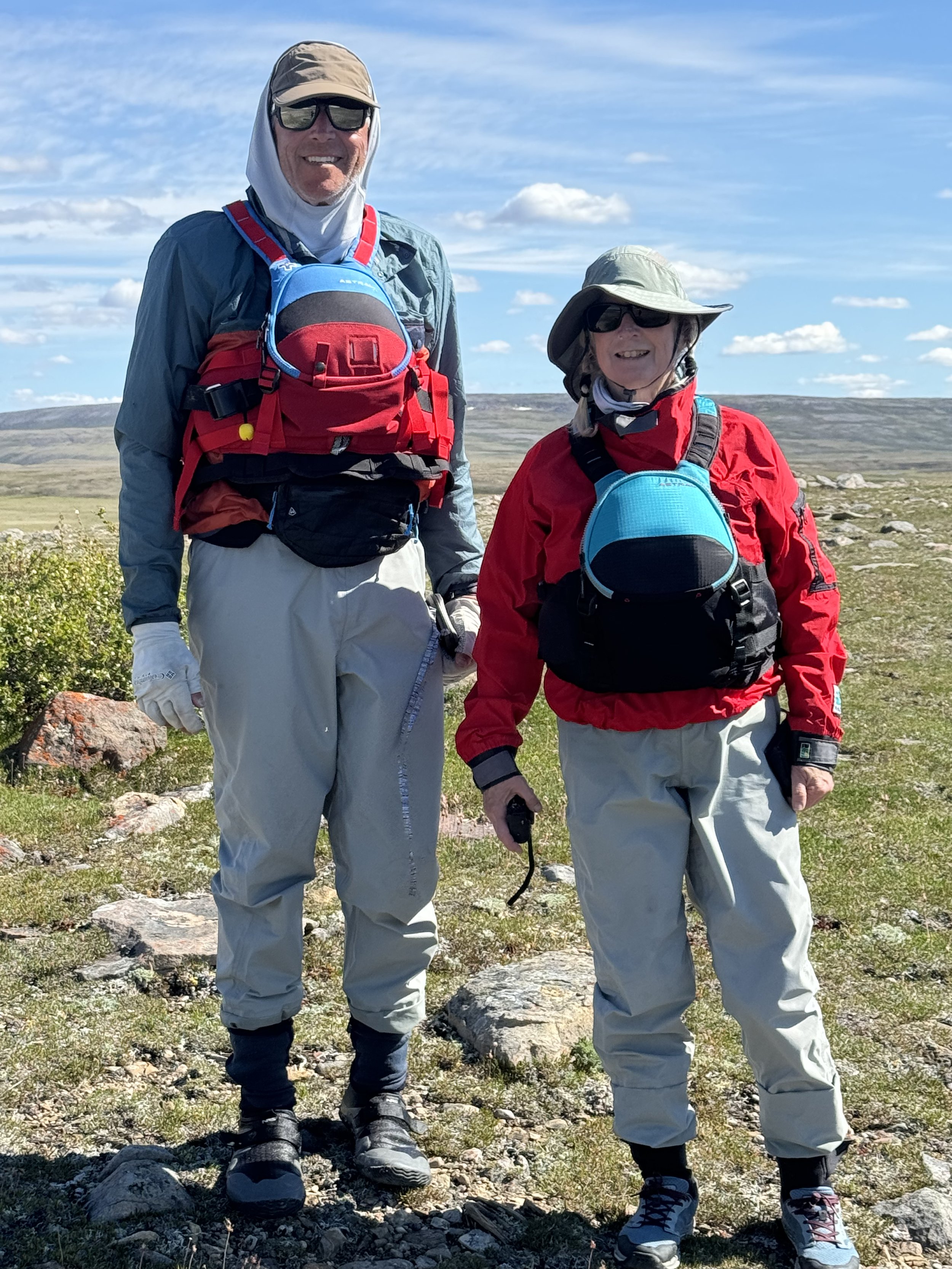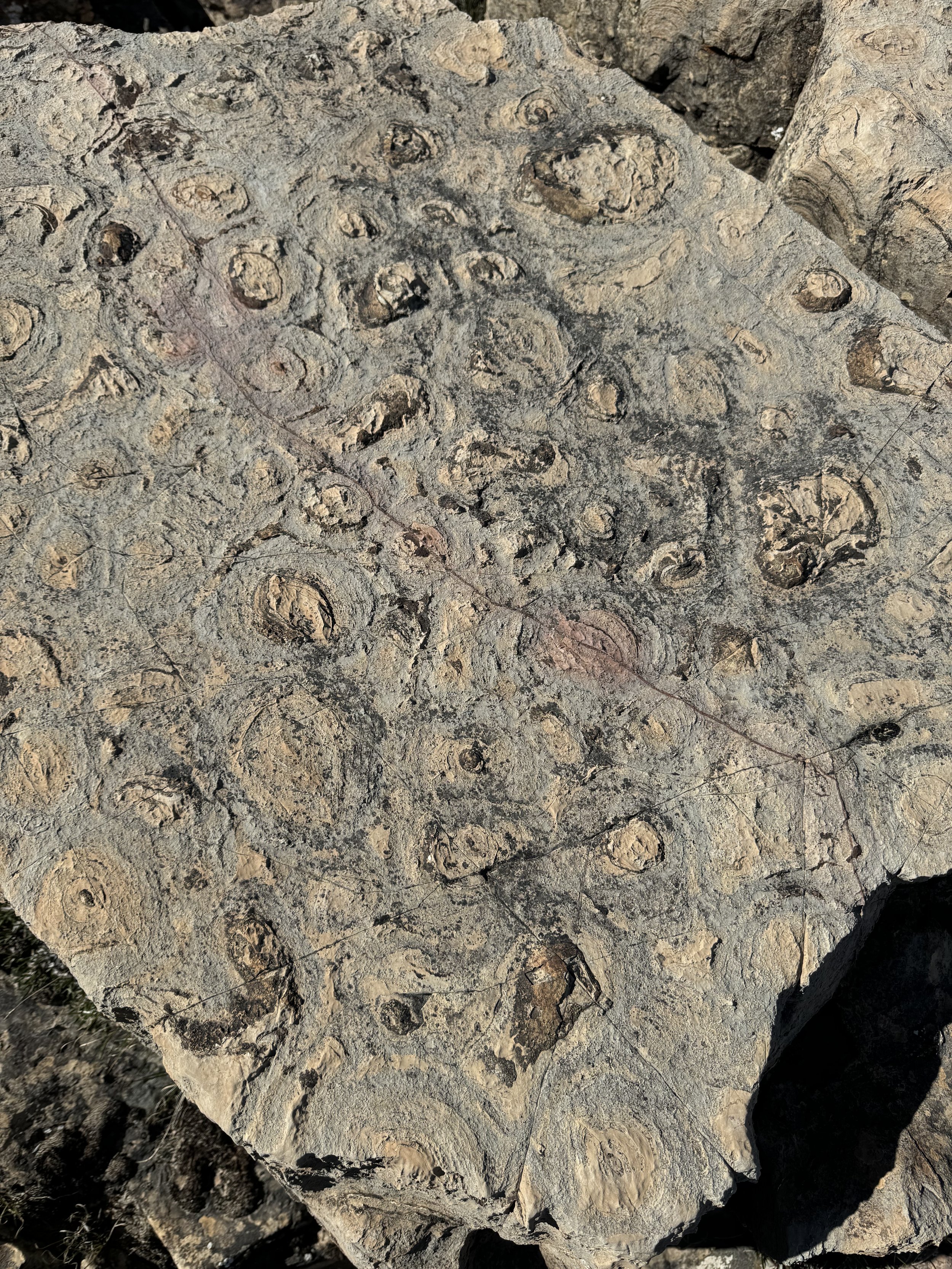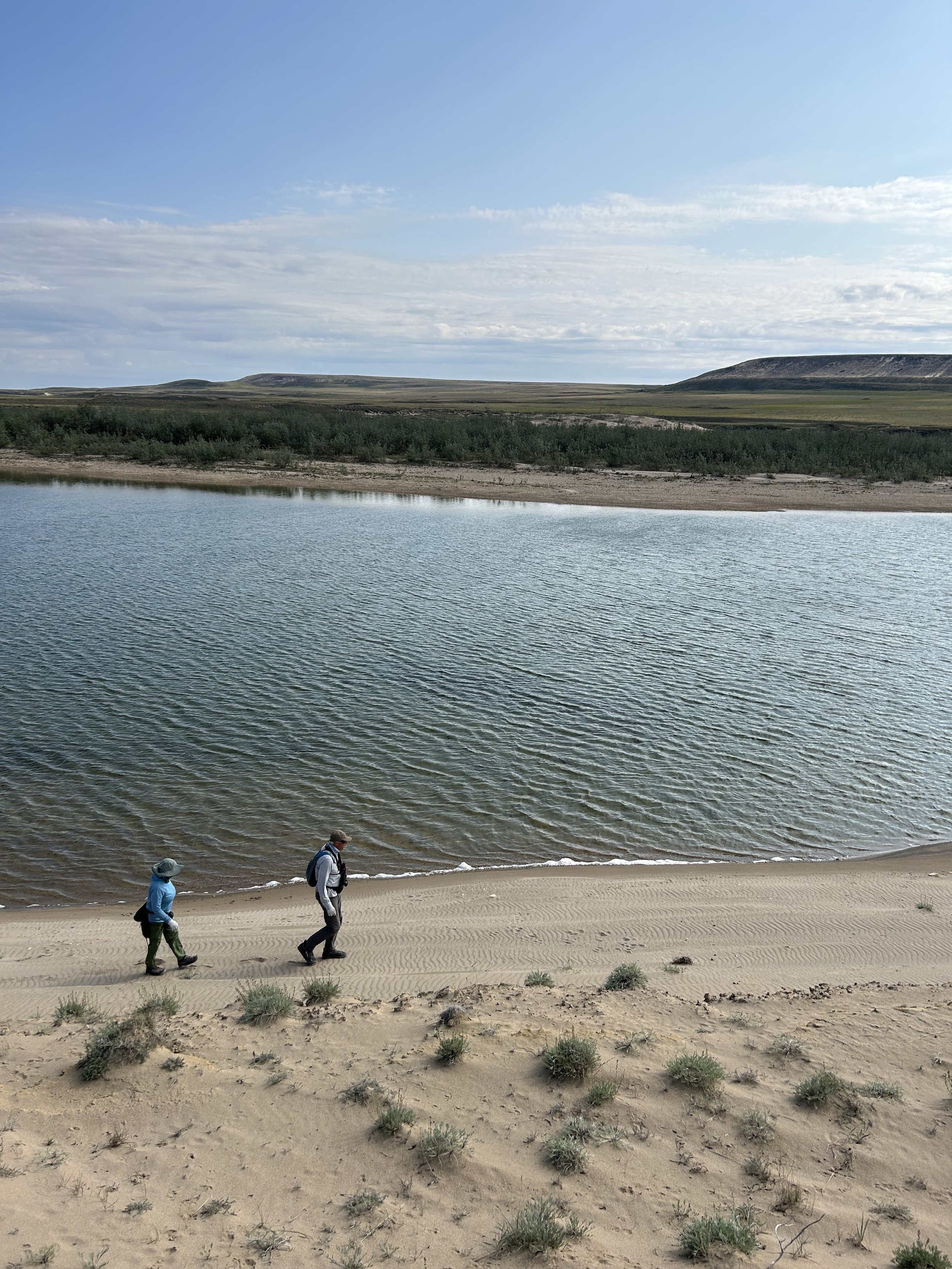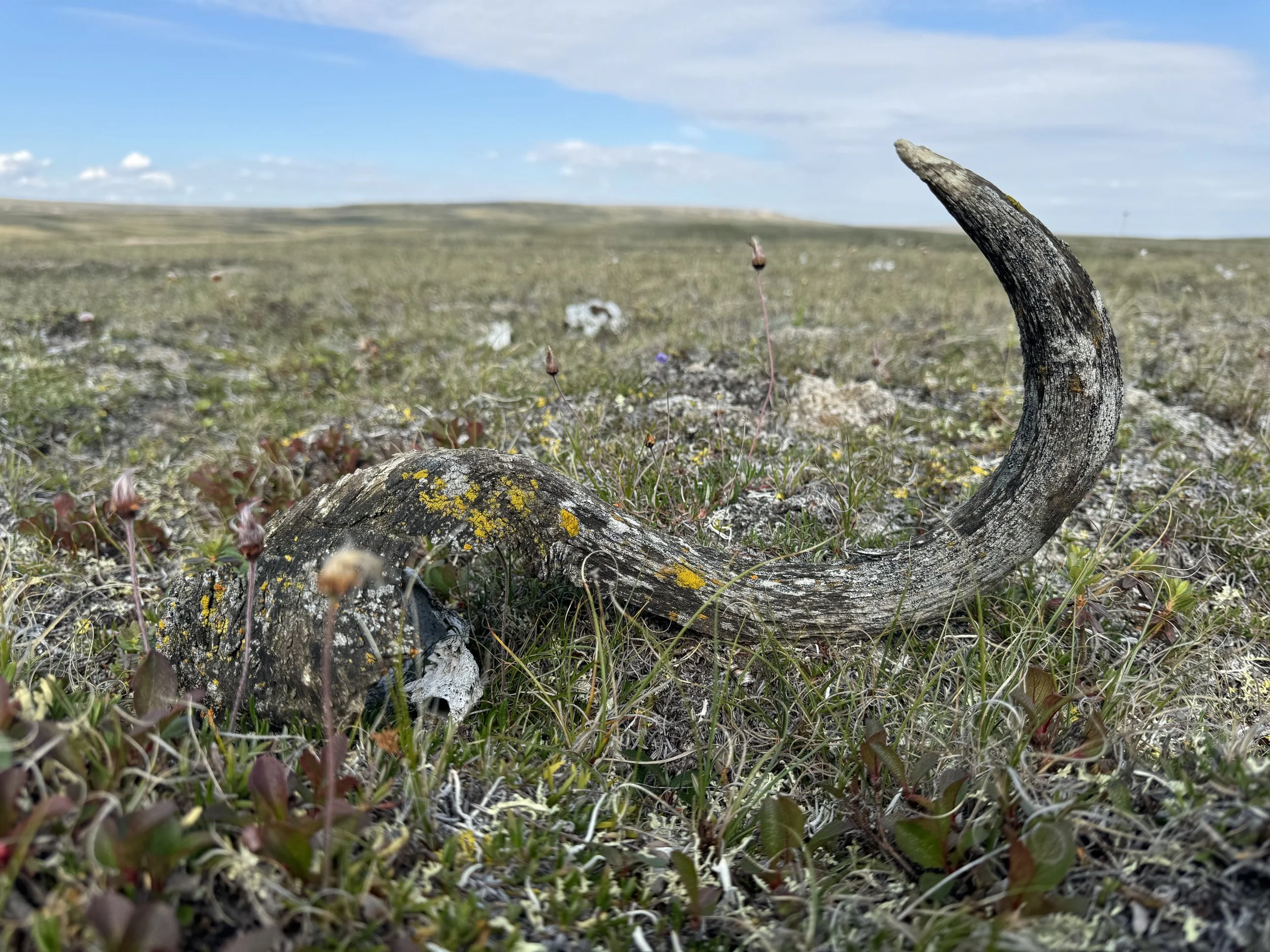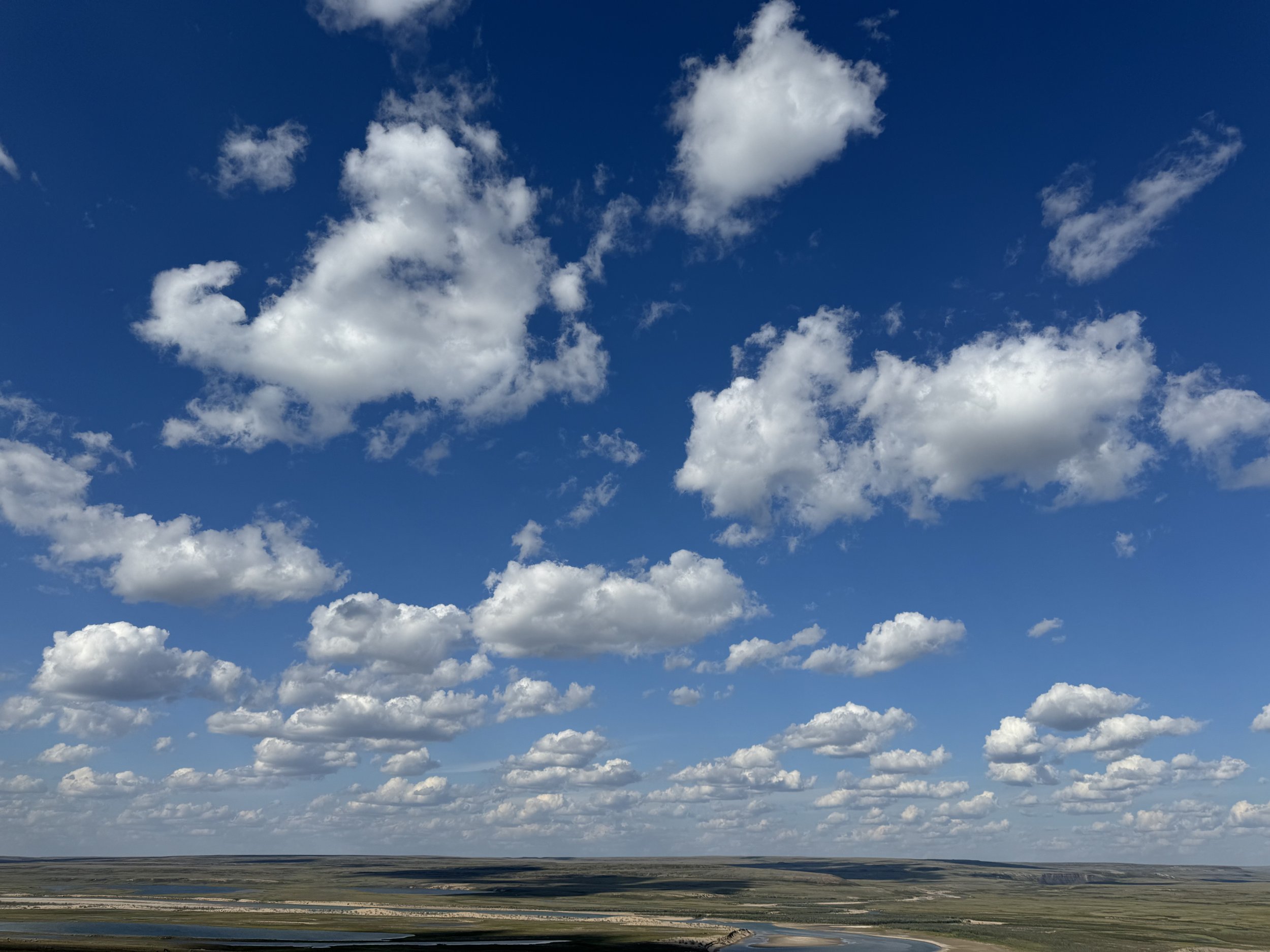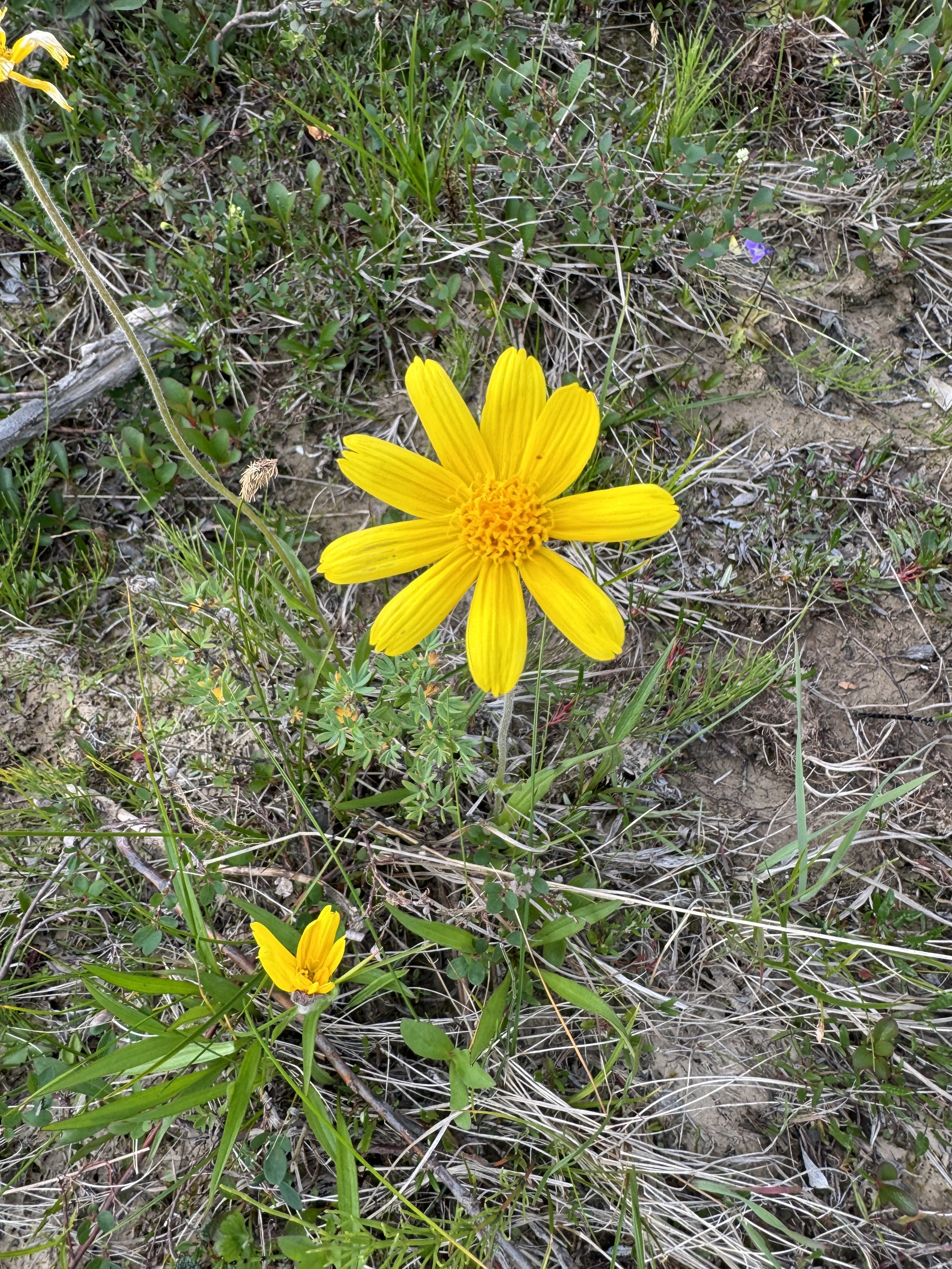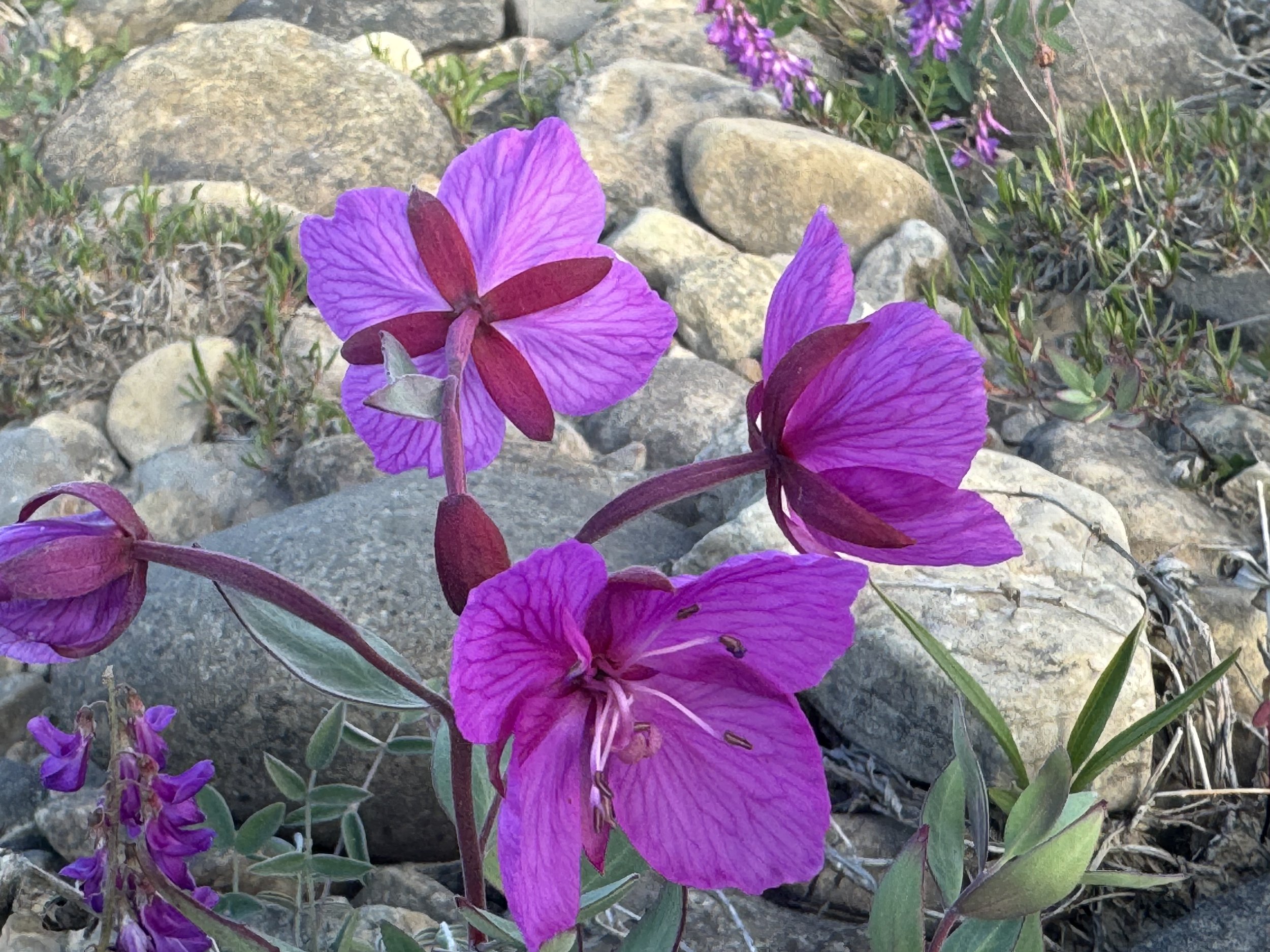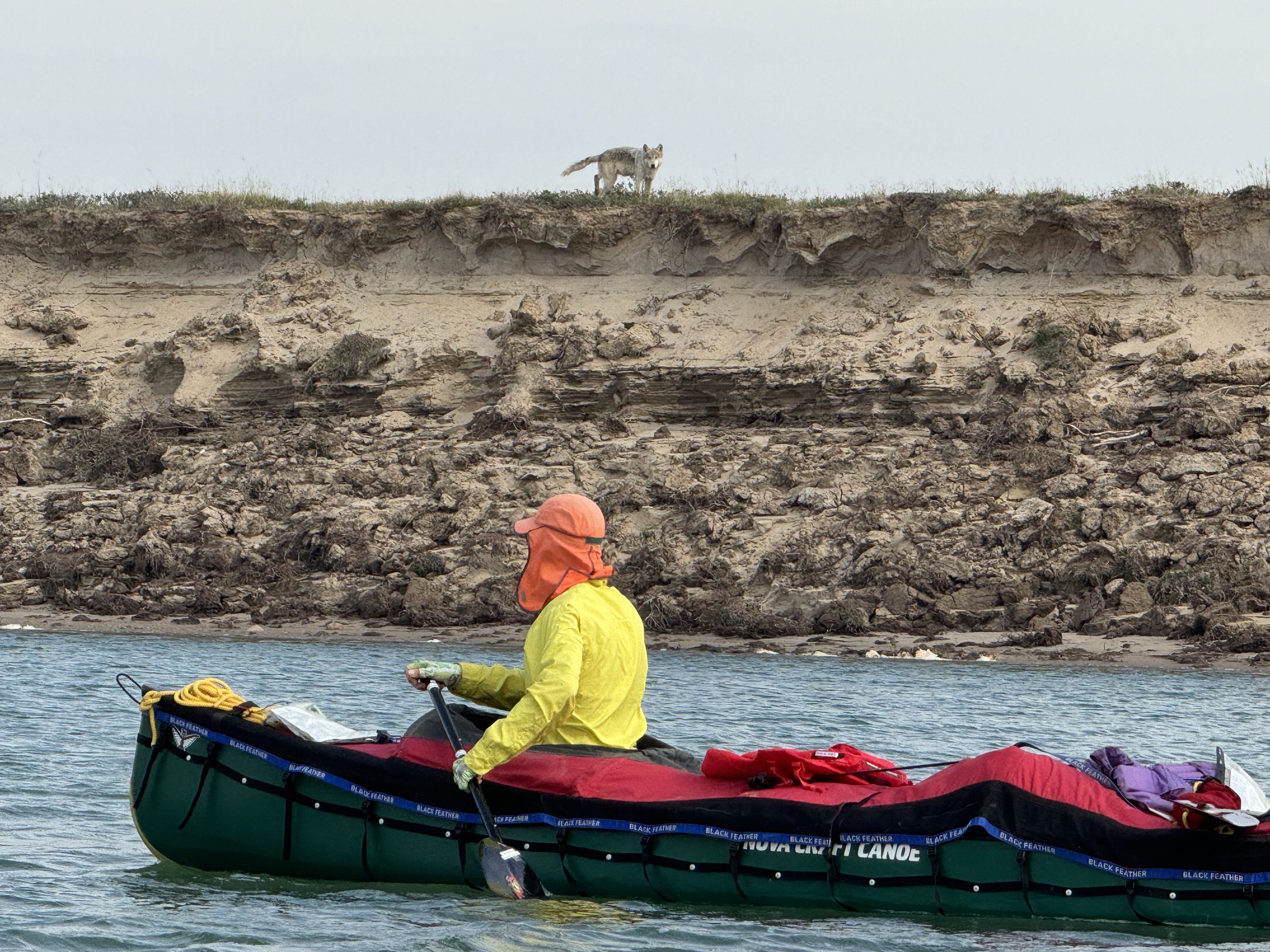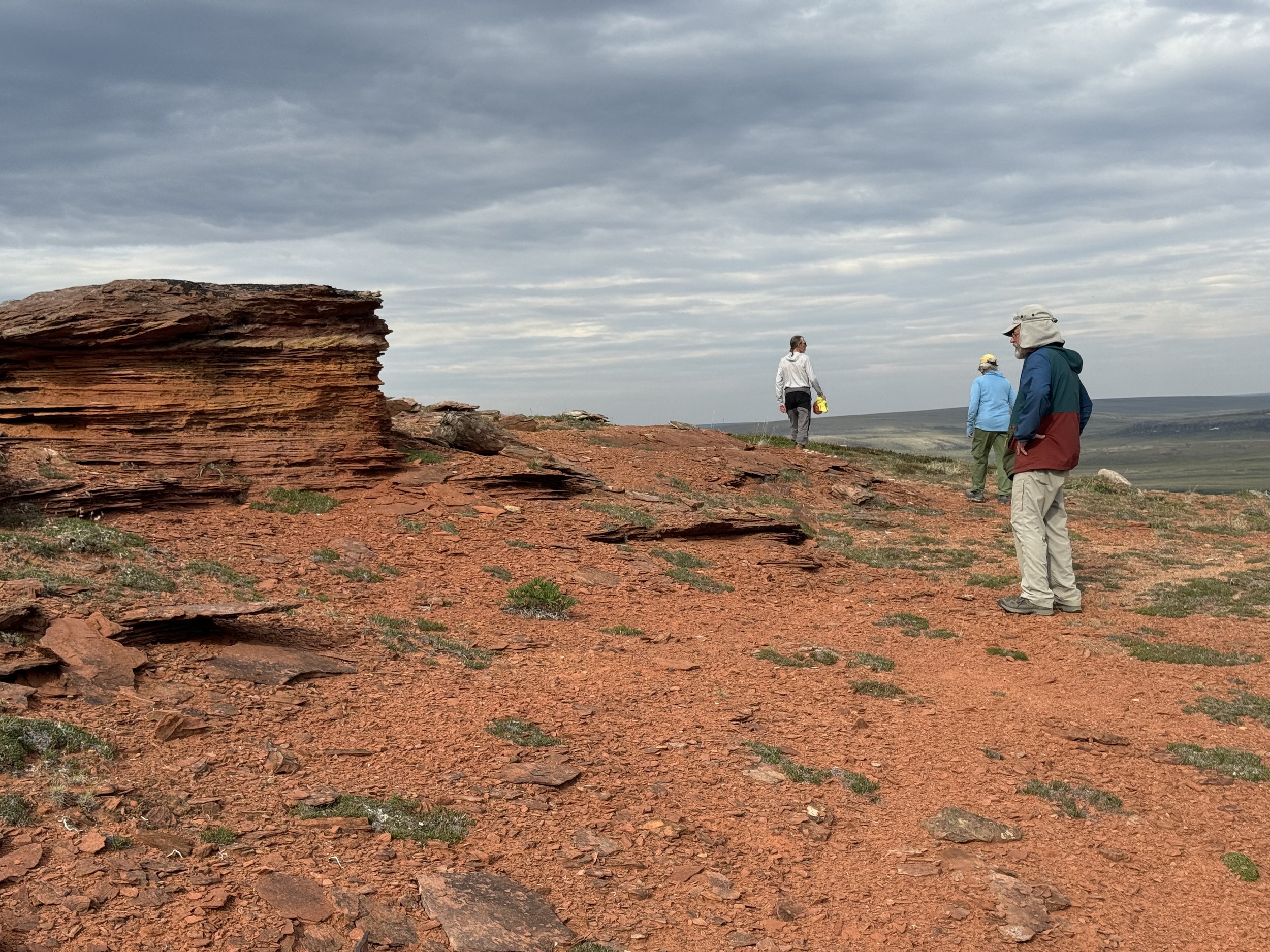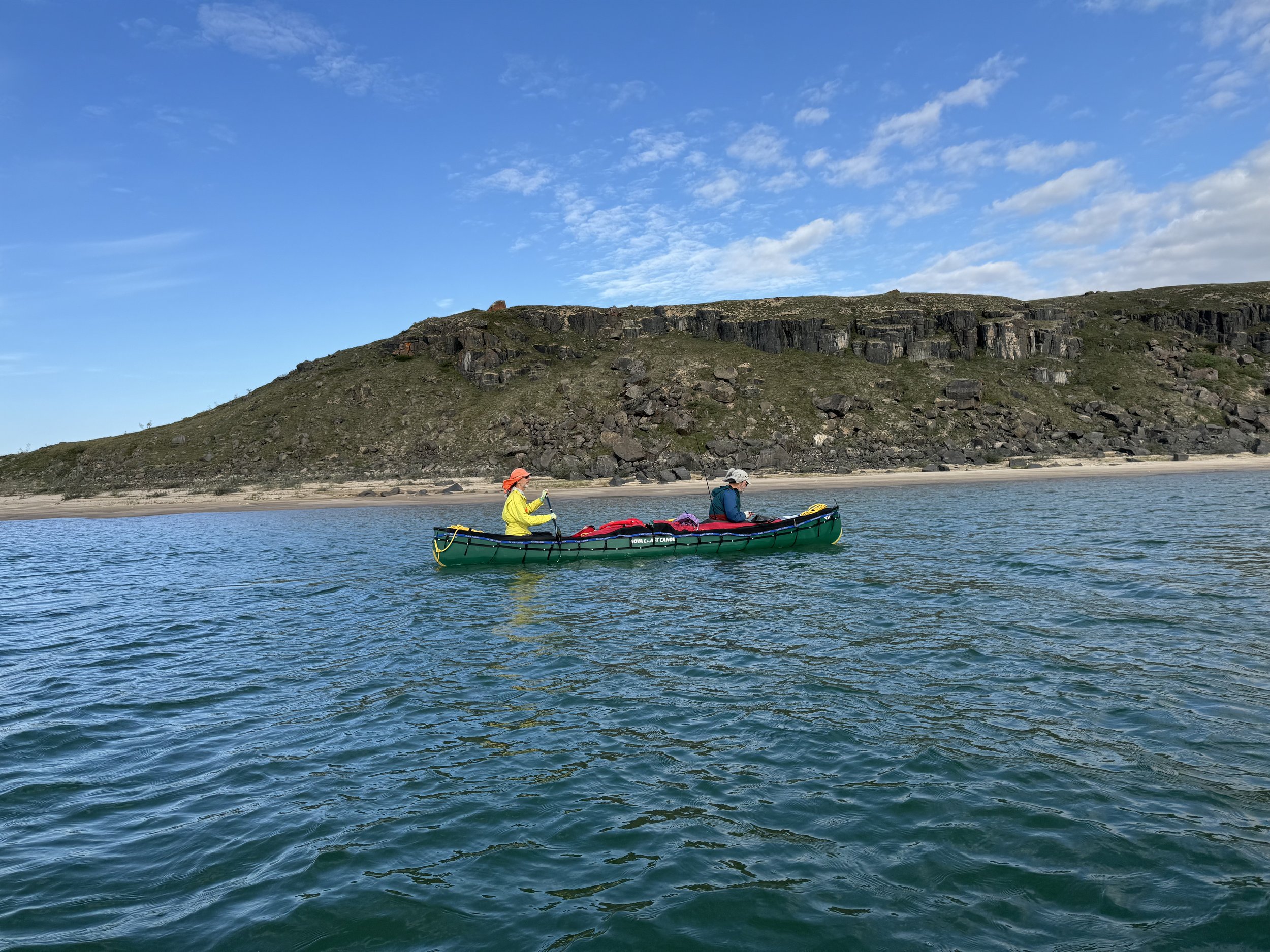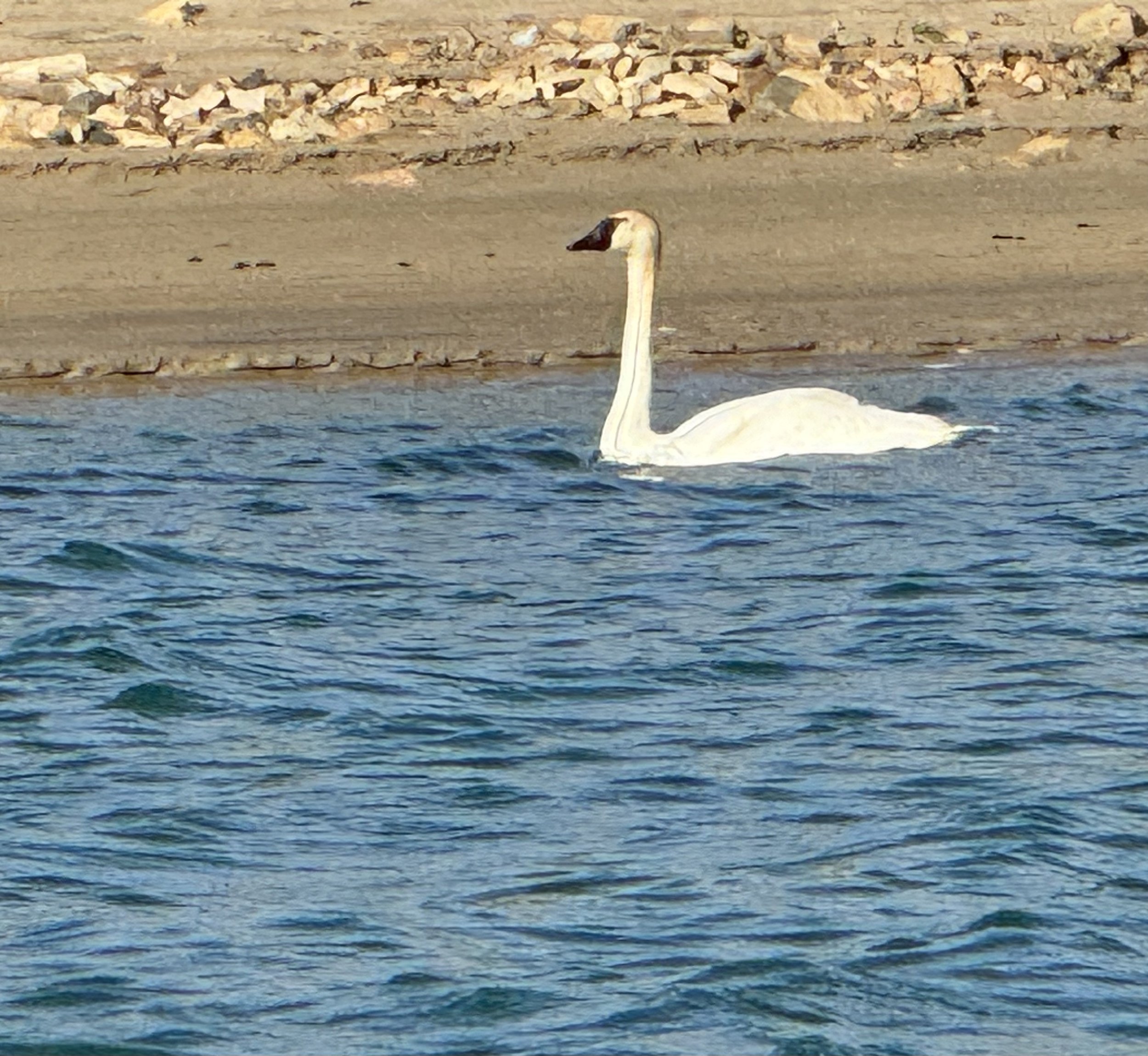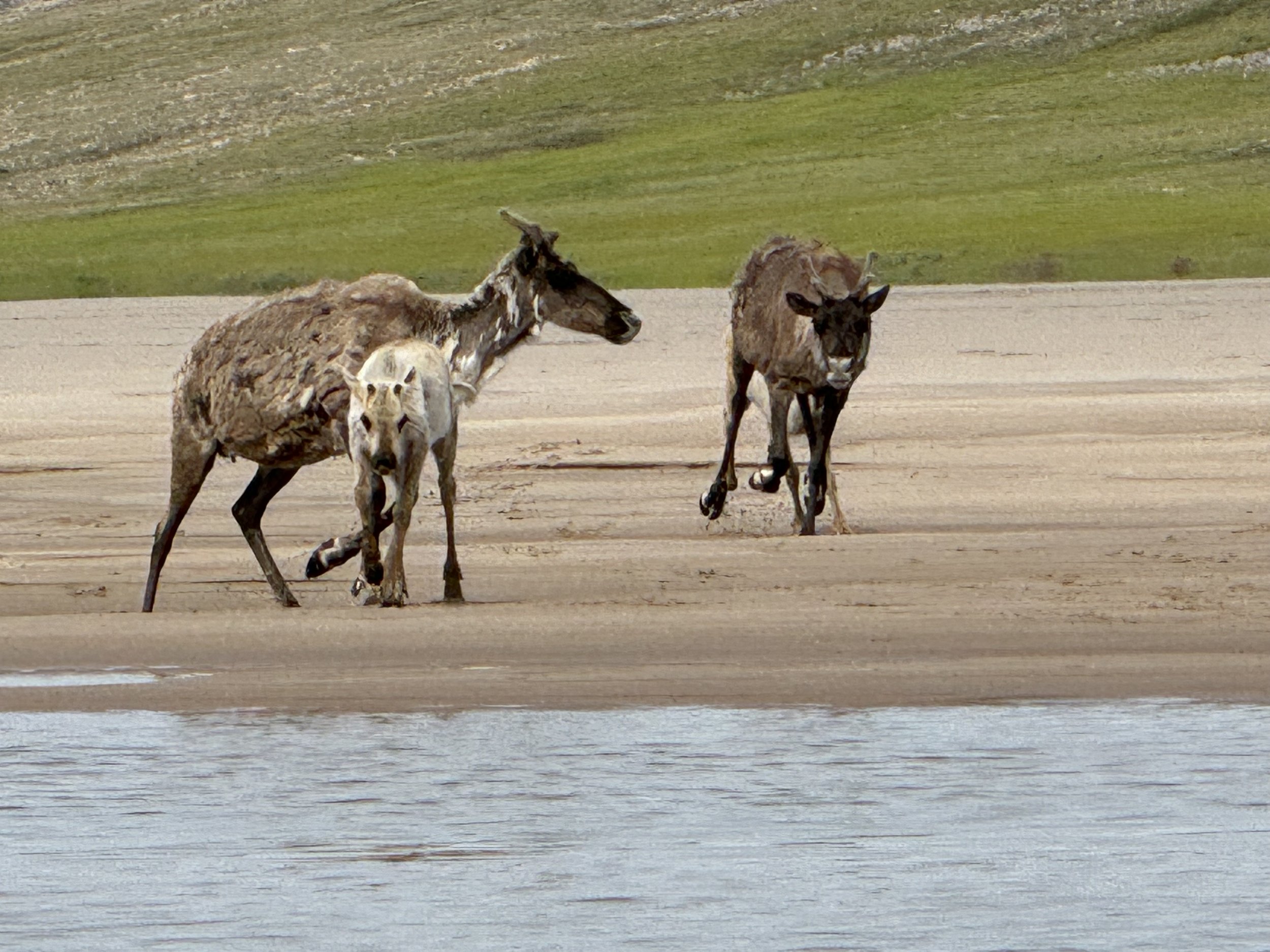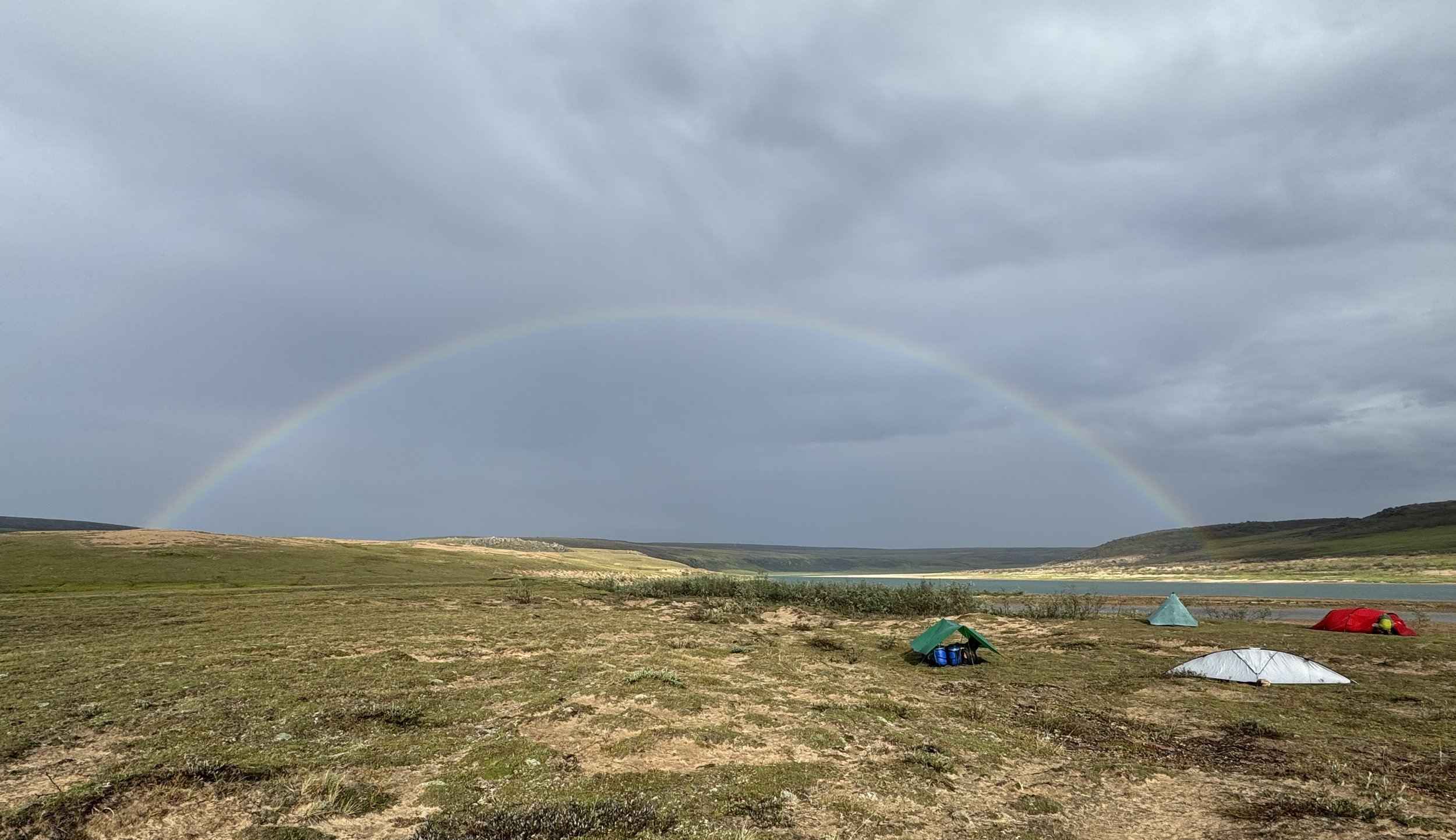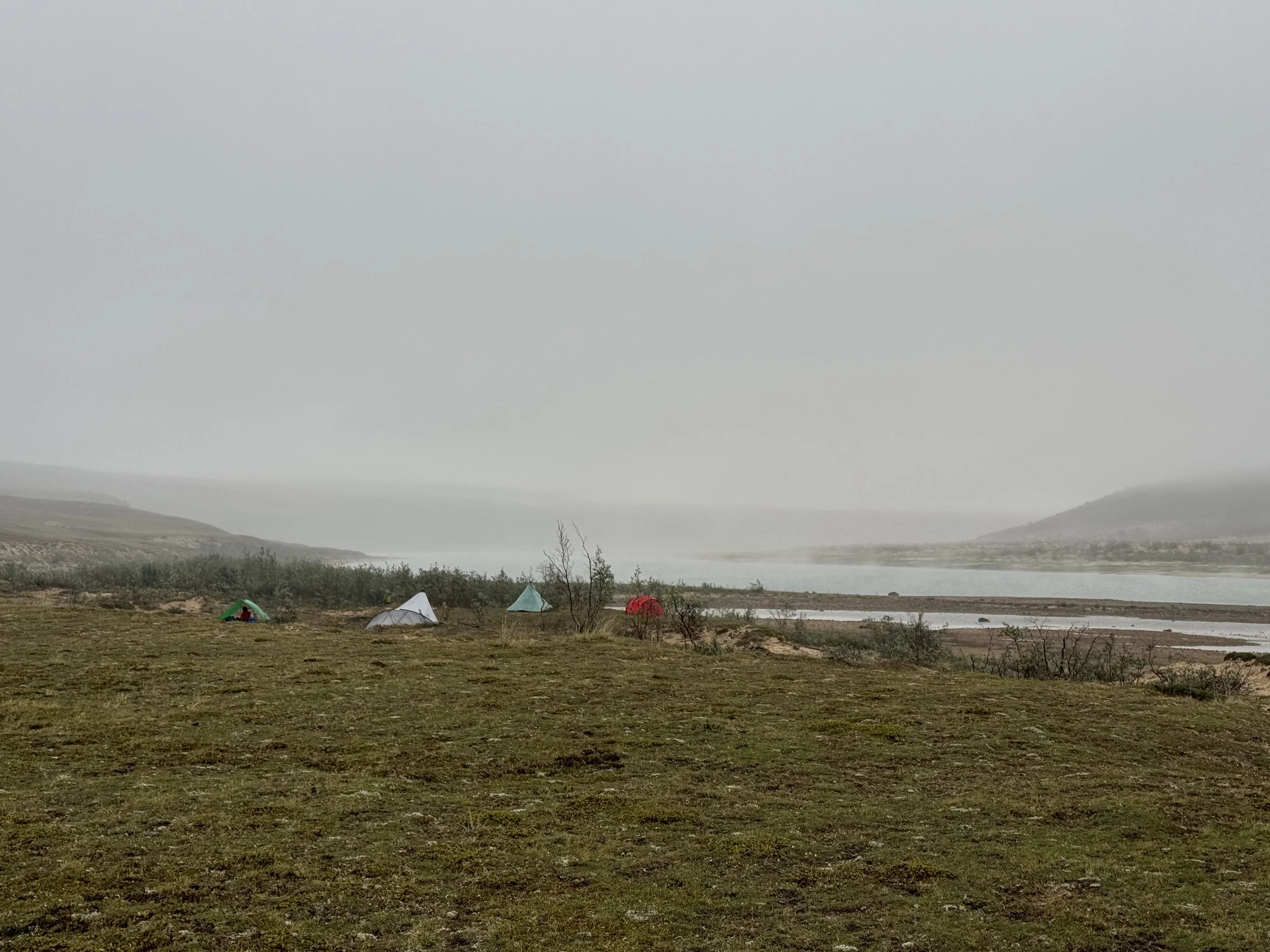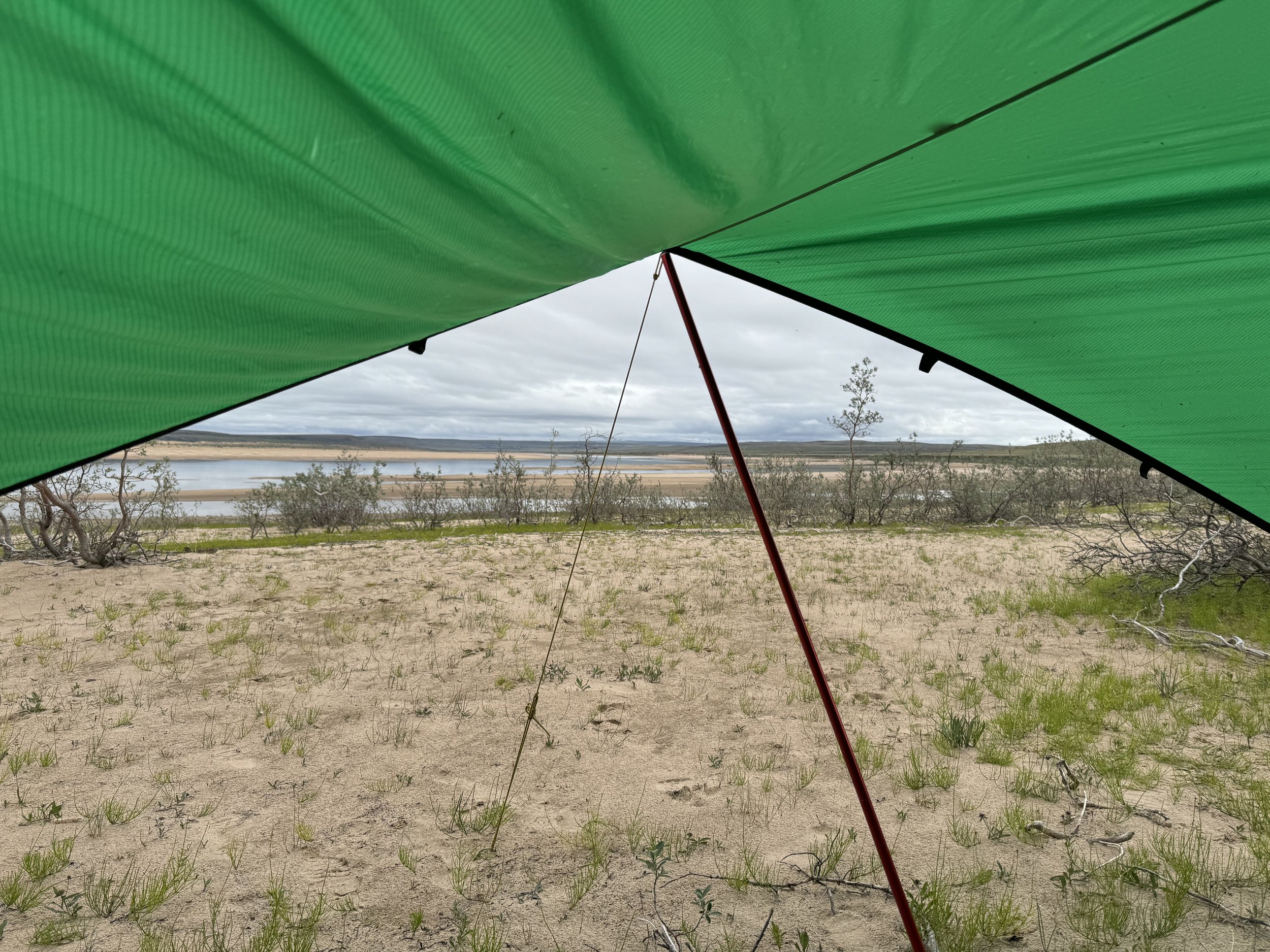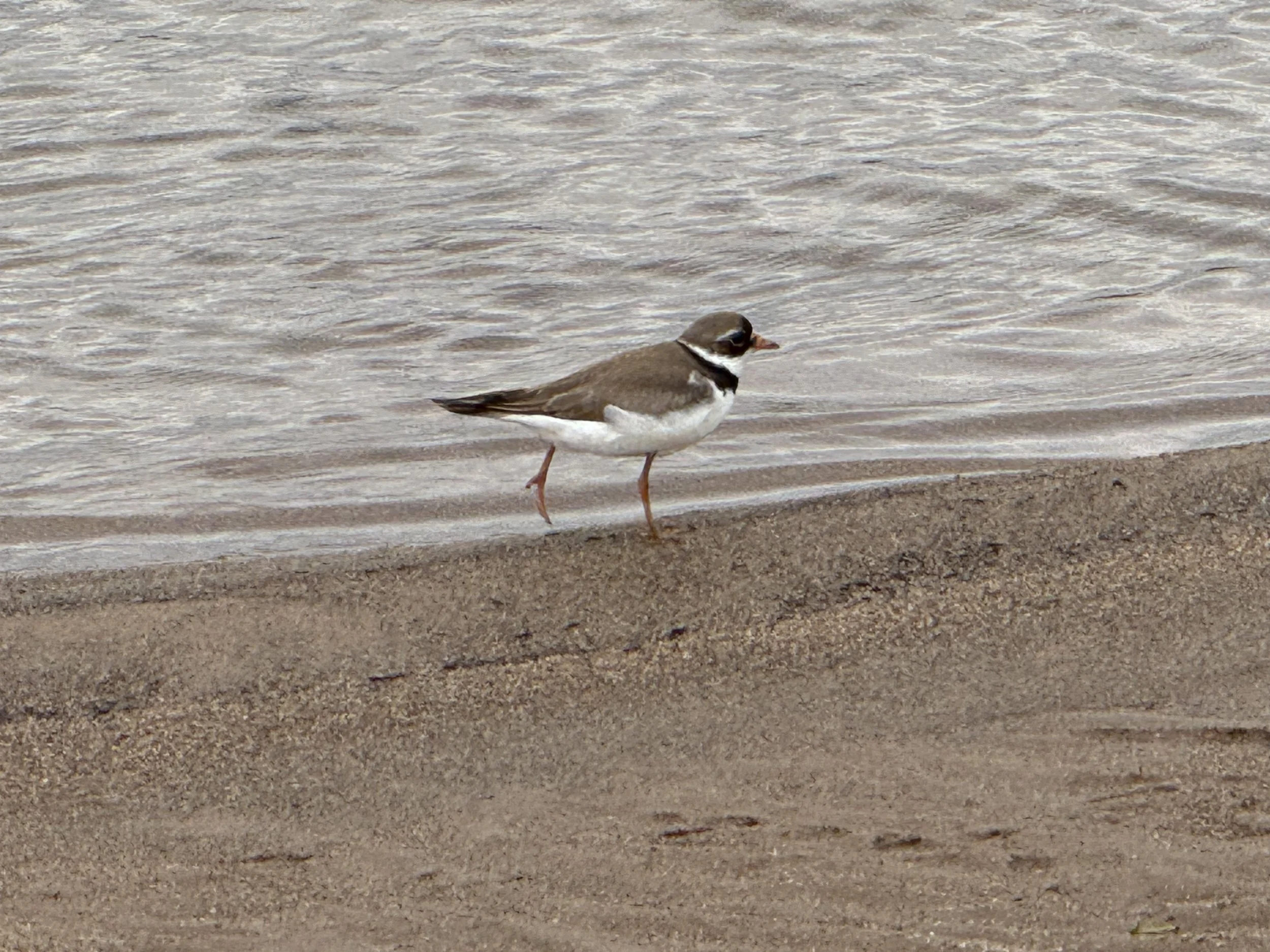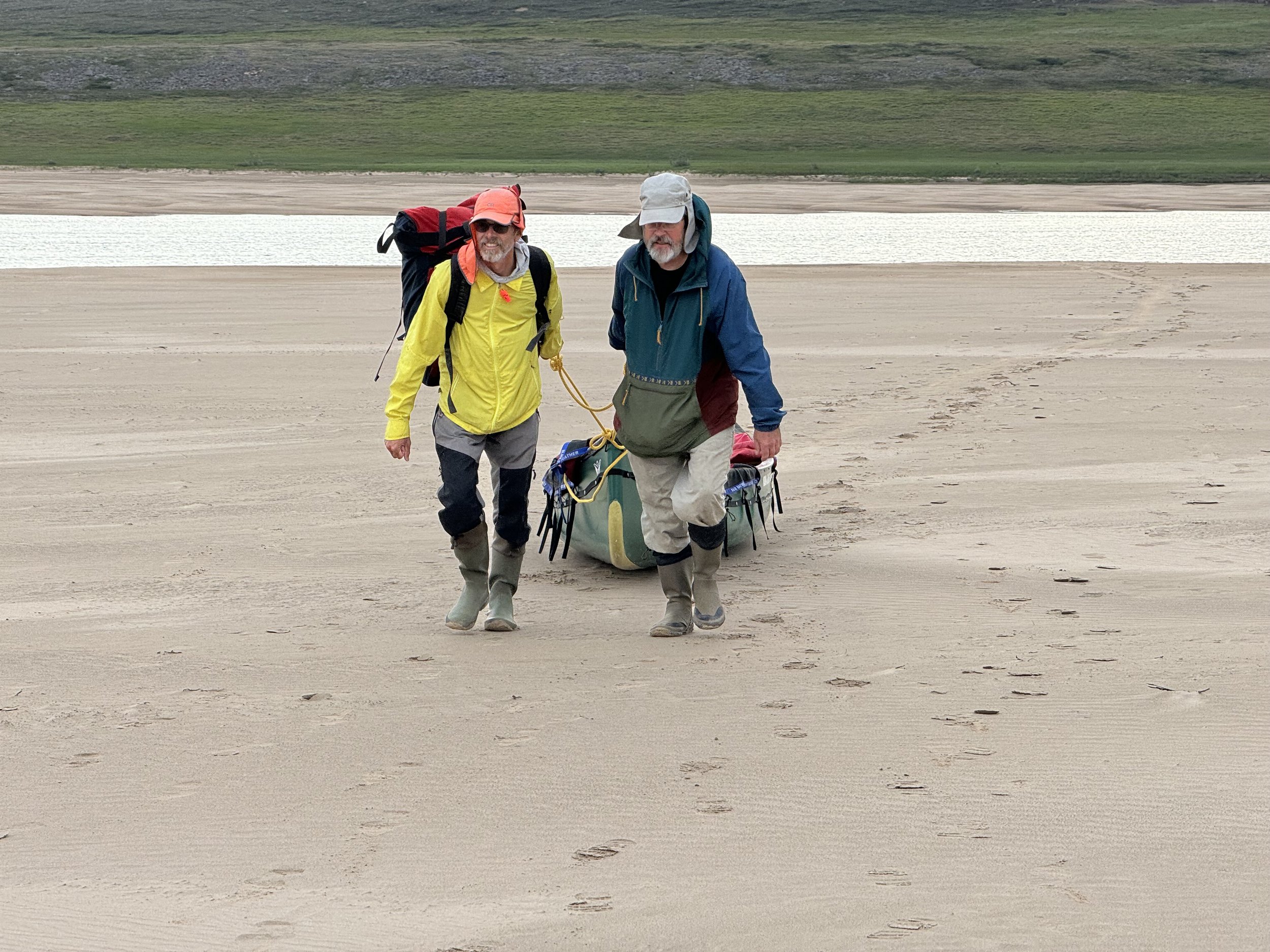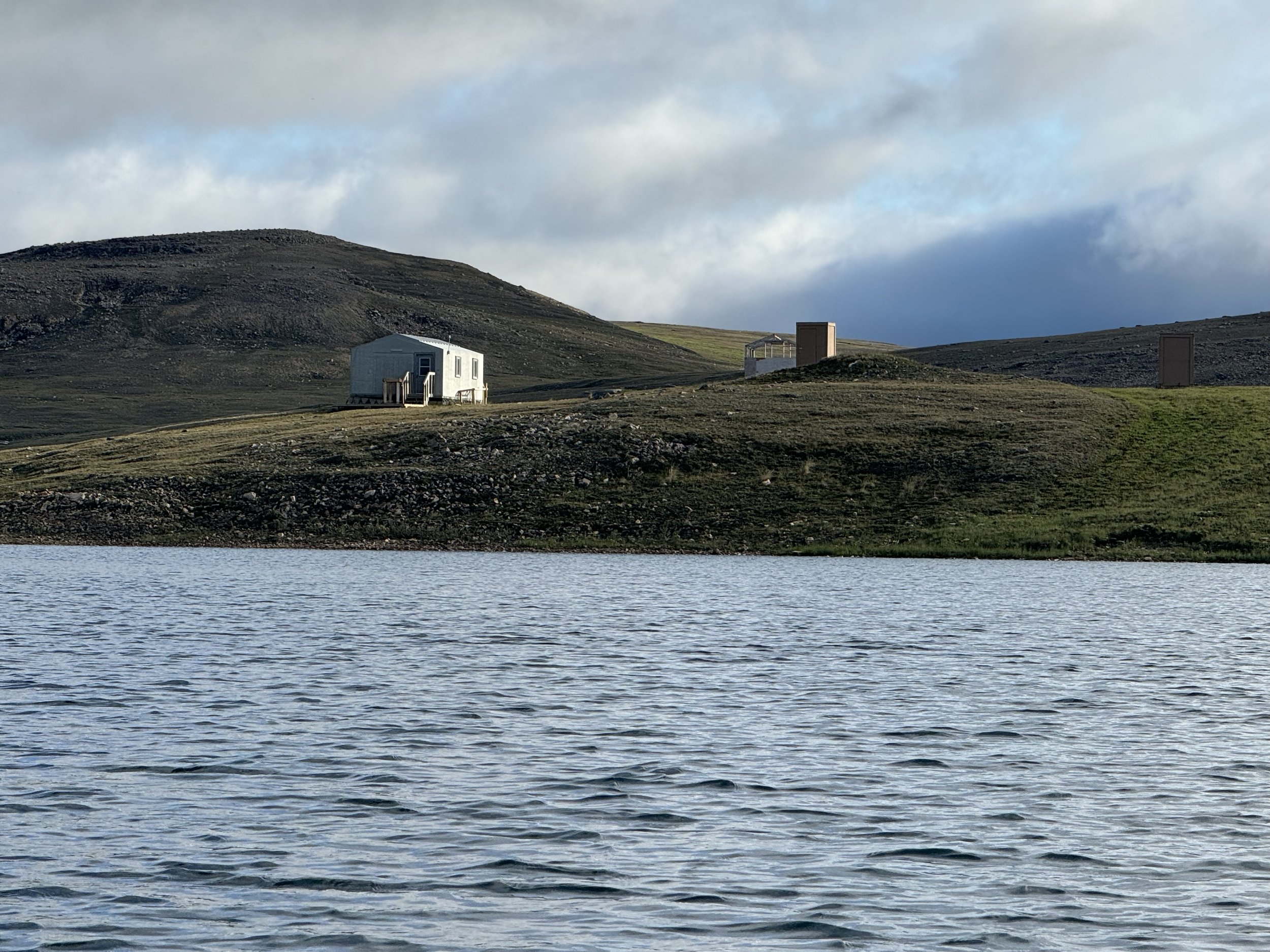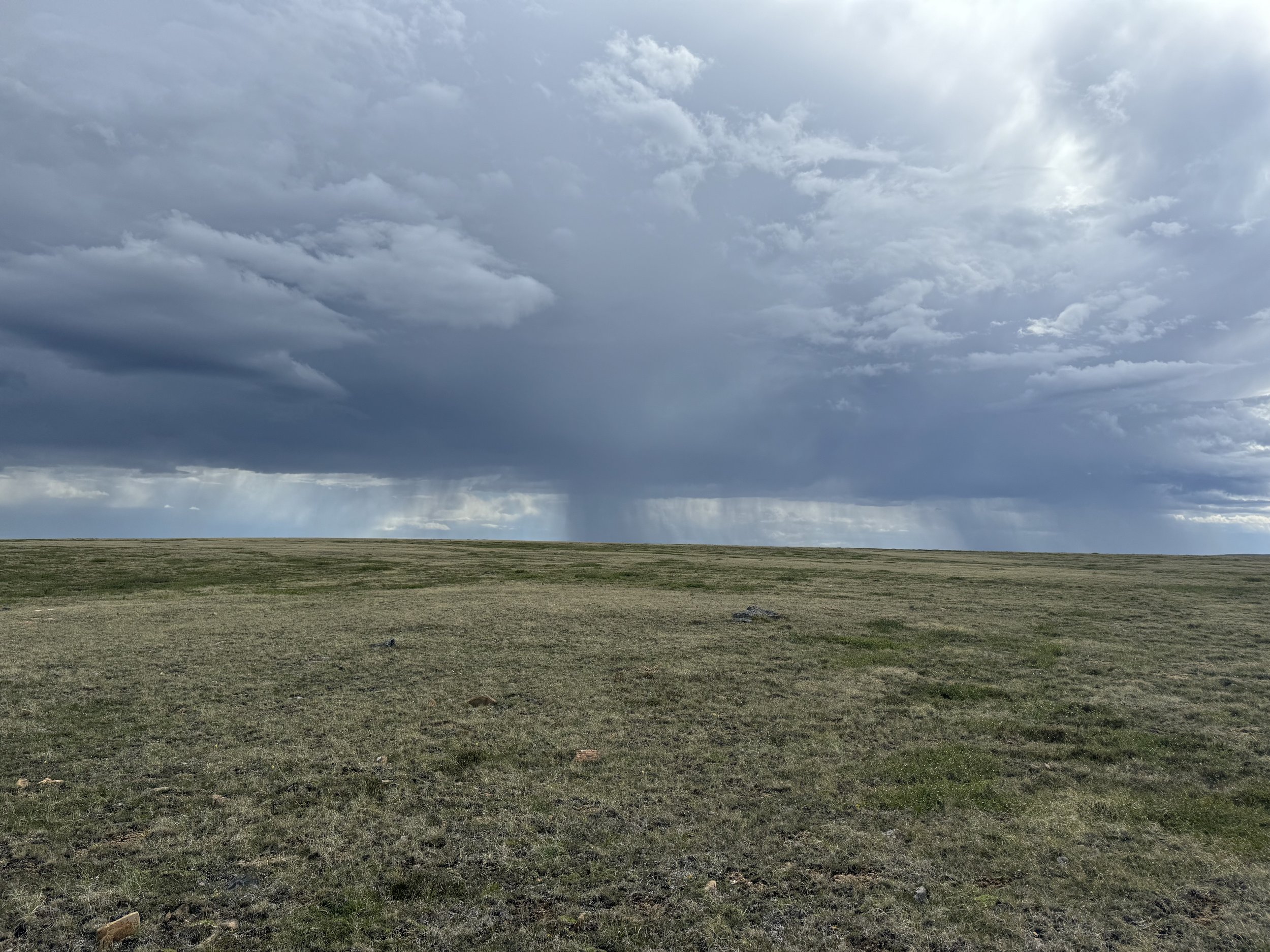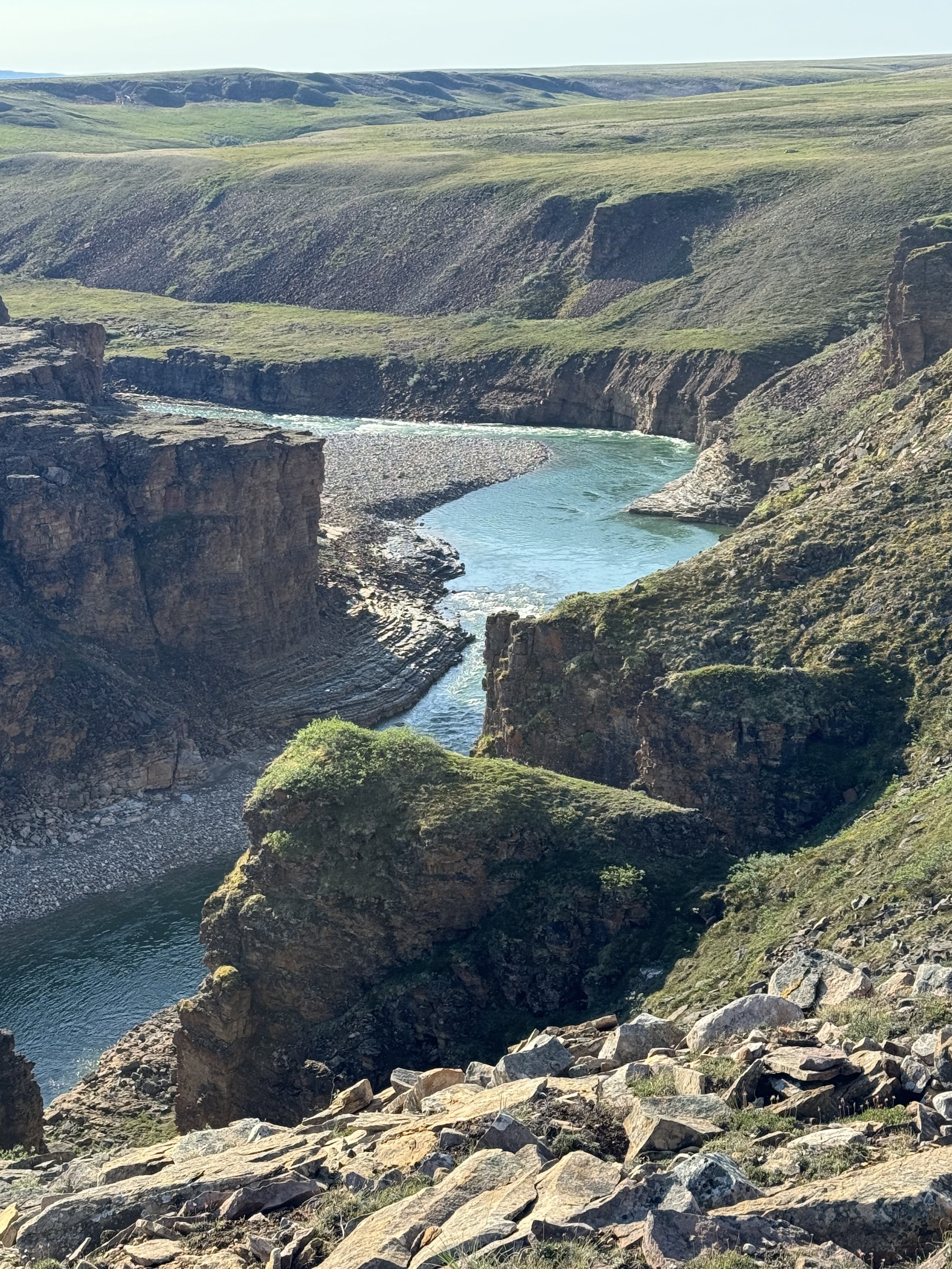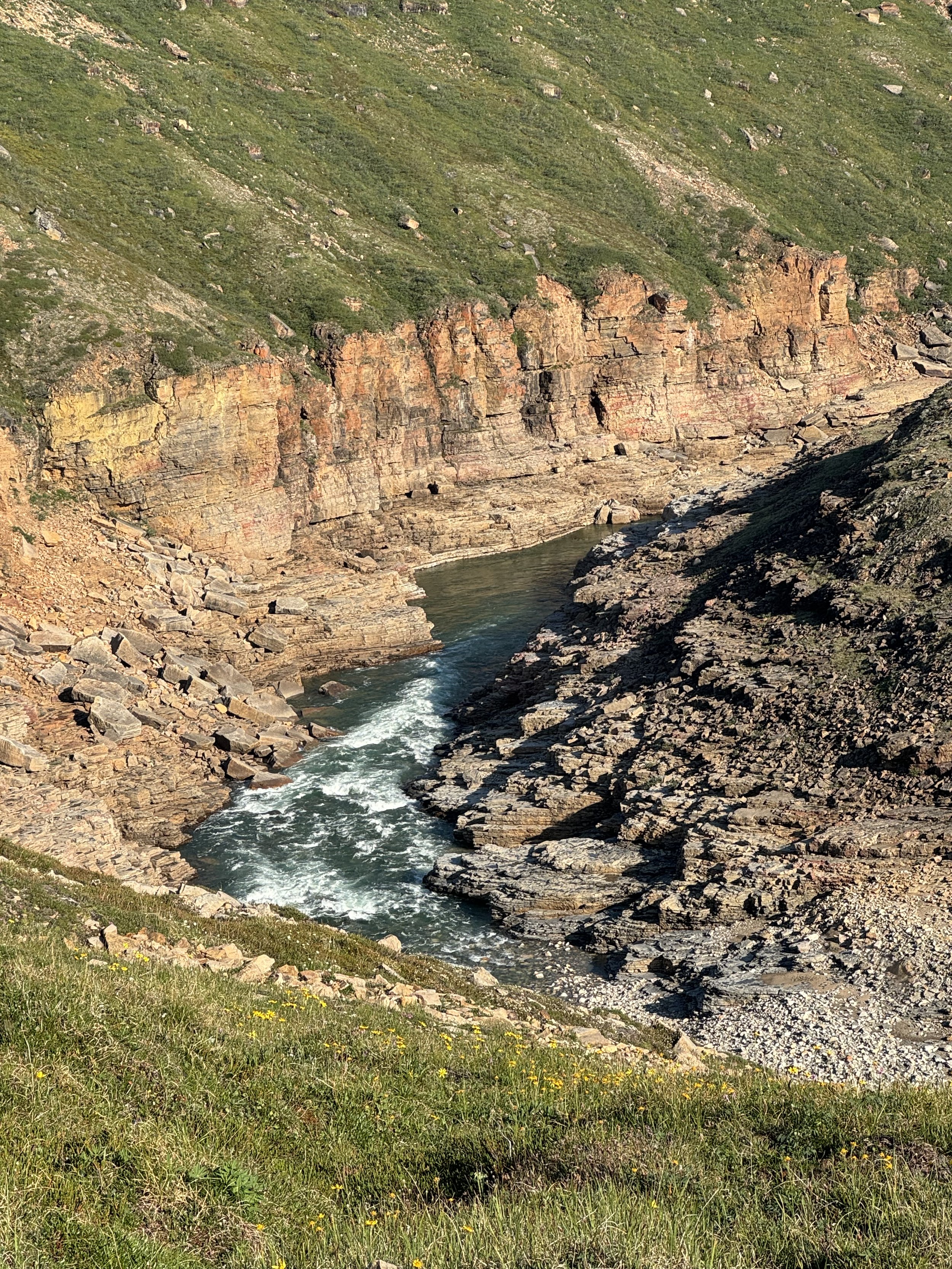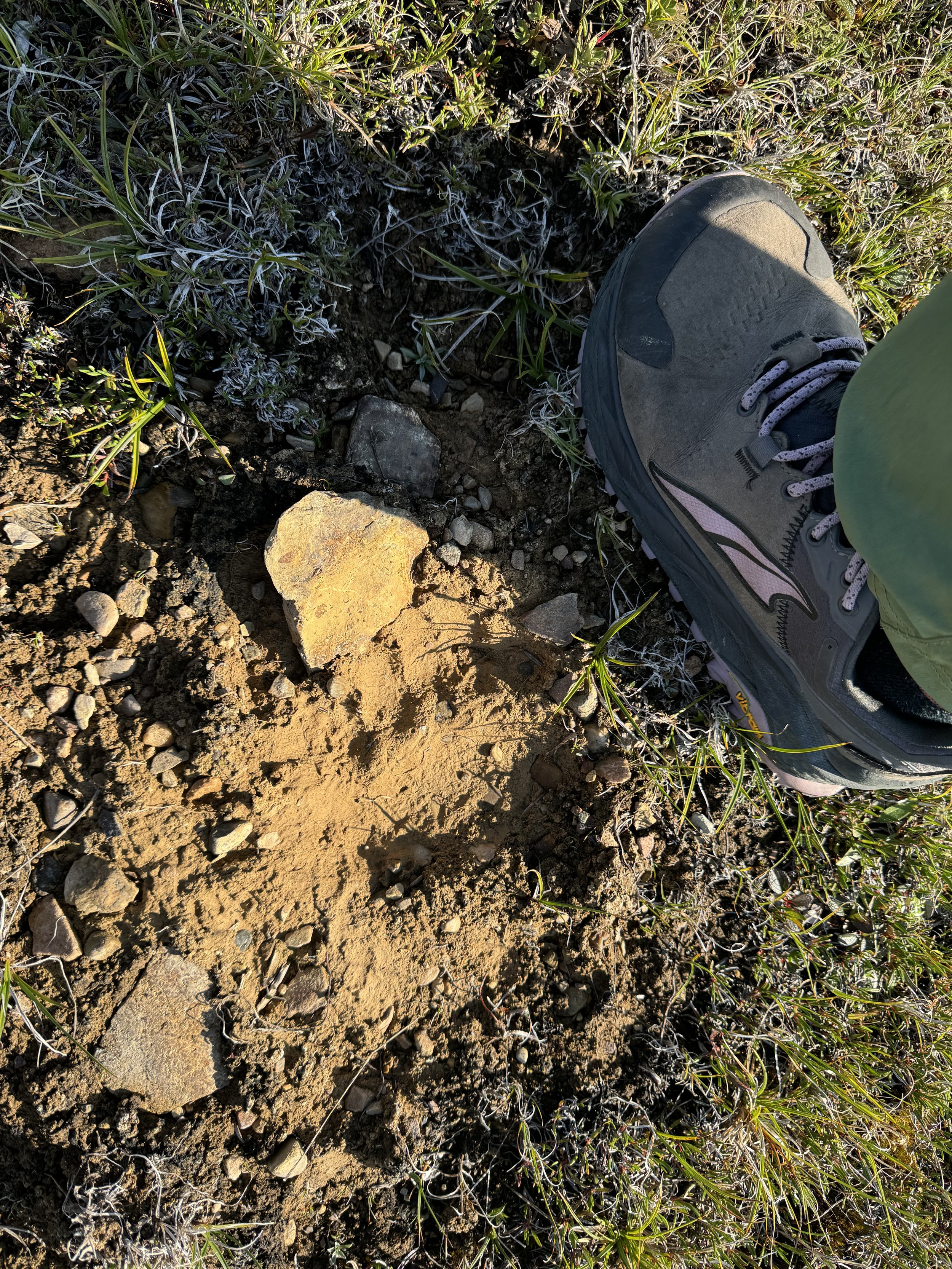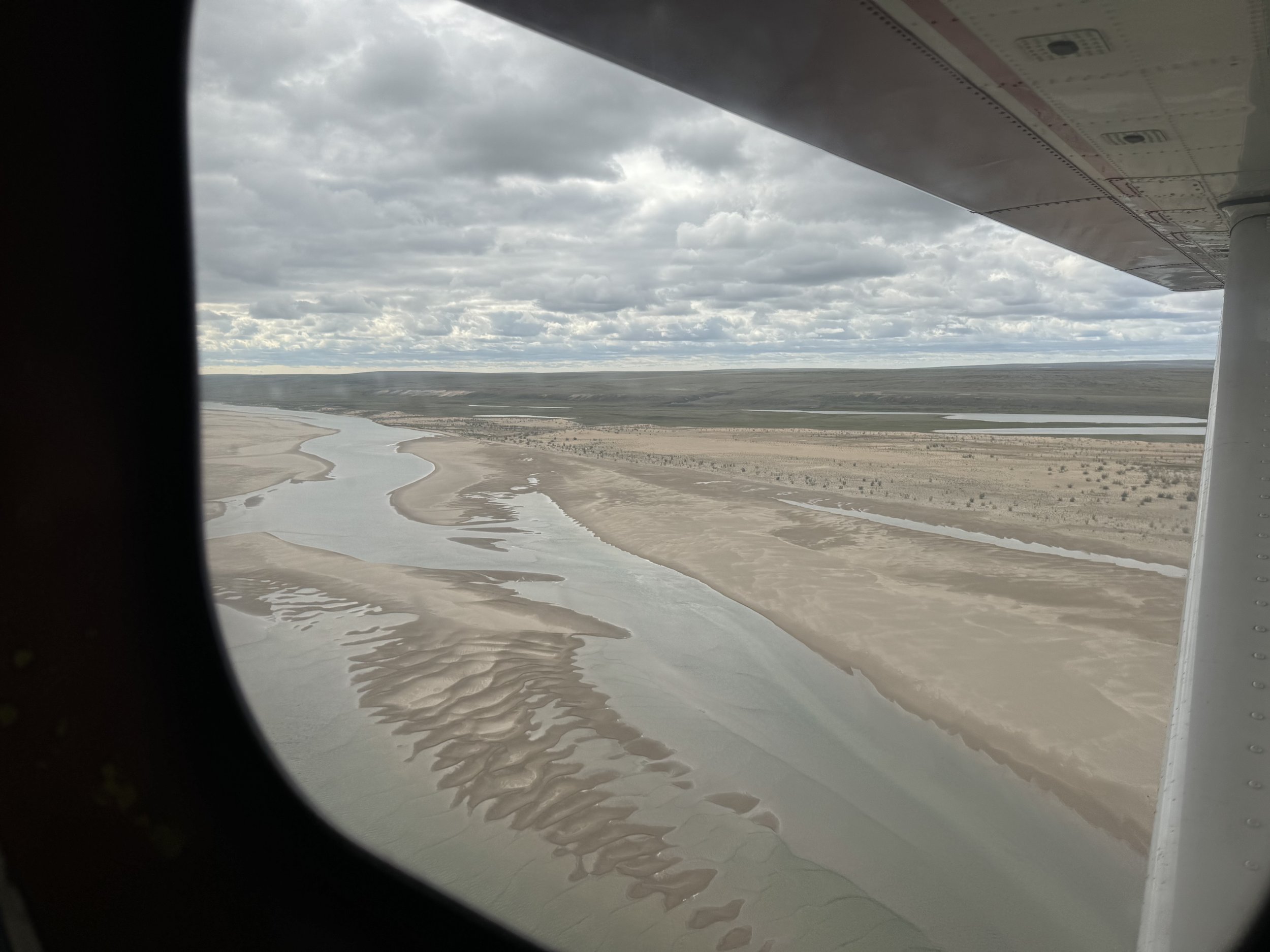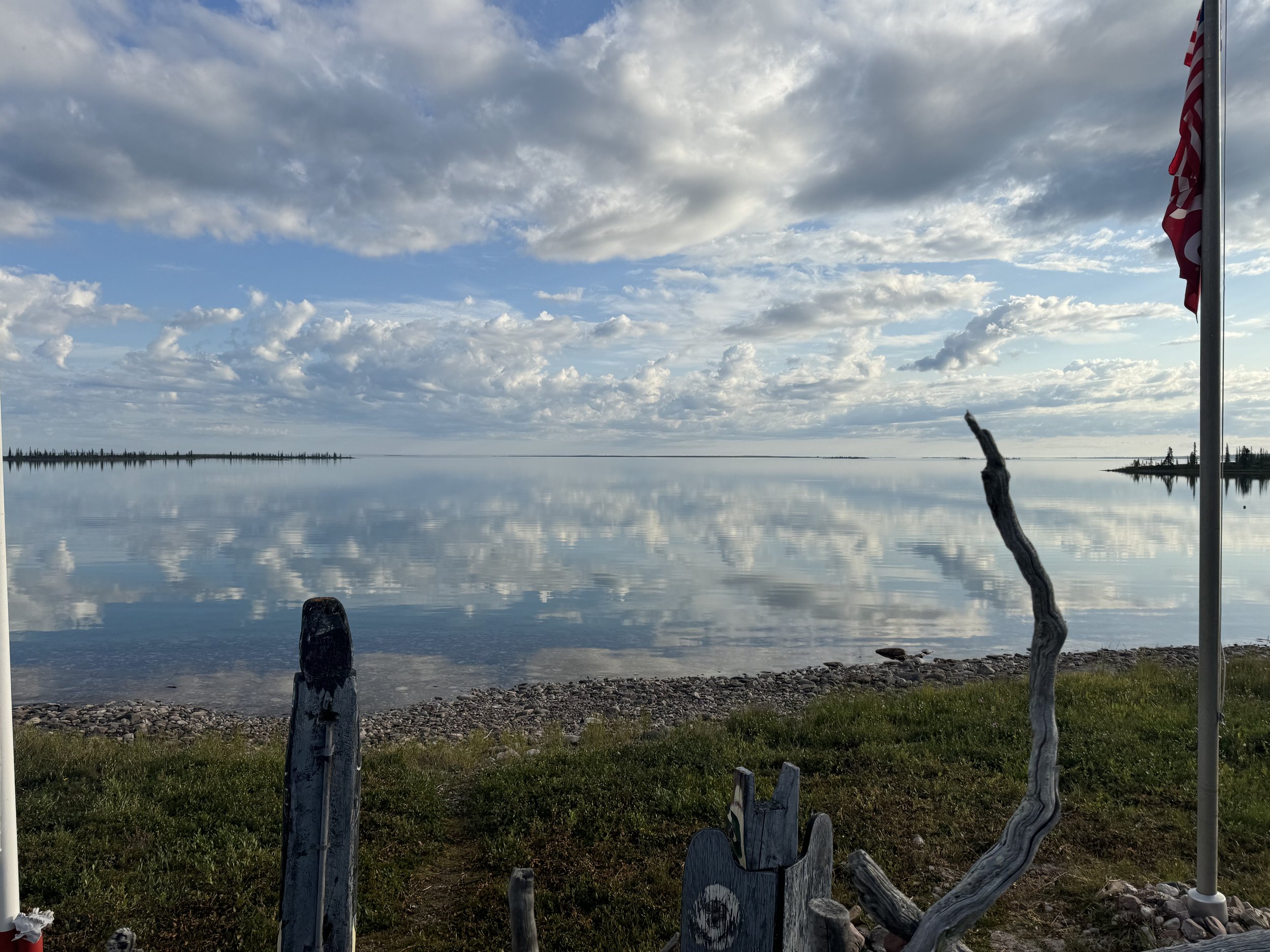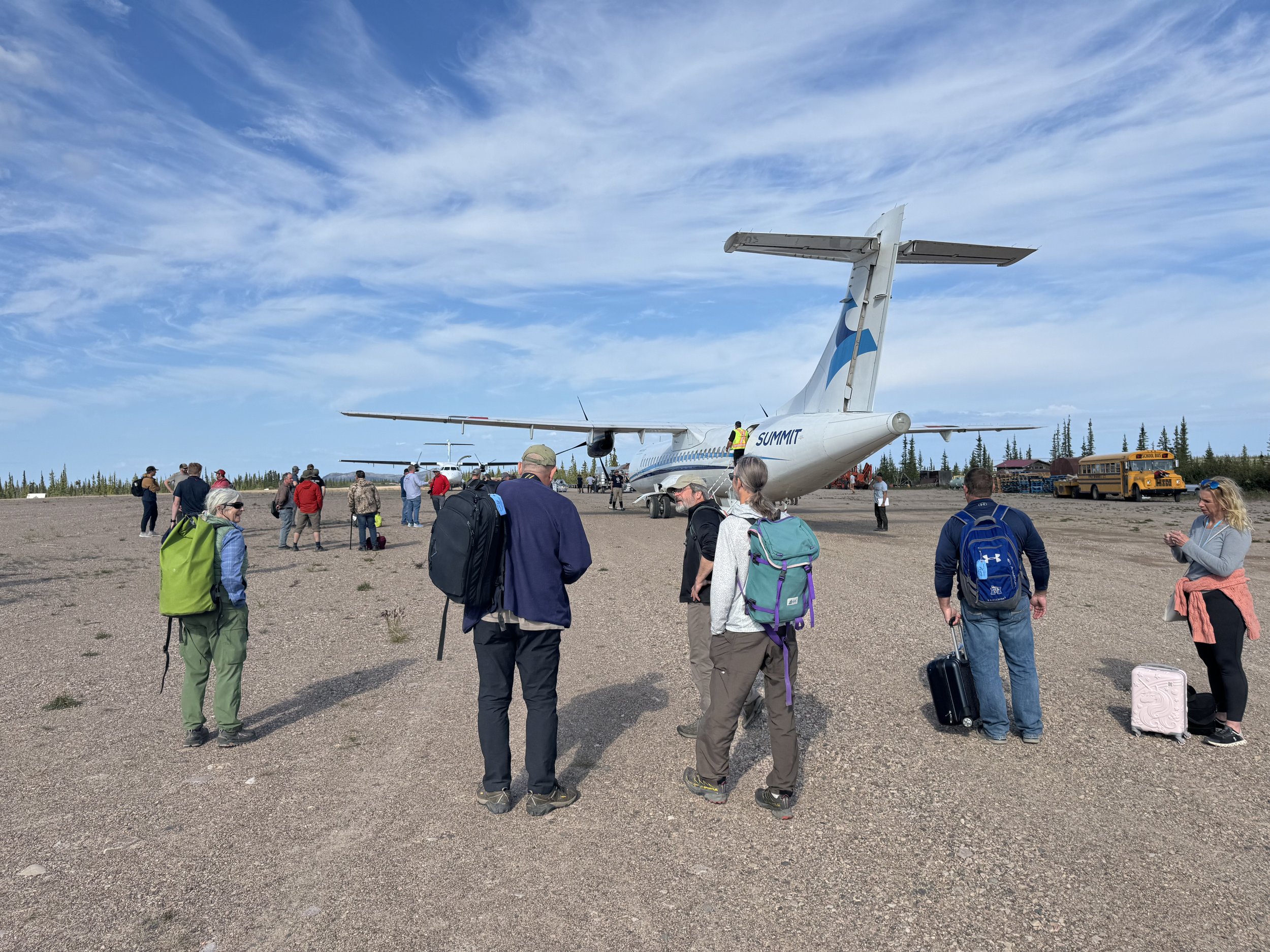In July of 1982 Don and I were driving a NOLS (organization that we worked for as outdoor instructors) vehicle to Yellowknife, Canada to prepare for a two month NOLS alumni trip on the Hanbury-Thelon Rivers in the Northwest Territories. Once we left Edmonton, Canada the roads were mostly gravel and Great Slave Lake was still frozen. Our plan to barge the course across the lake to start our course was in jeopardy, Fast forward to July 2024. Don and I are once again headed to Yellowknife to paddle a river in the Northwest Territories. This time there is a paved road all the way to Yellowknife and it has been awhile for Great Slave Lake to be frozen in July.
So how did we get into this situation of paddling a river in the NWT? In the early part of this year, Don and I were having traveling adventures in Australia and then Japan. We were pretty focused on the moment when we received an email from Jim, a crew member on our Antarctica trip. He and his paddling partner Brian had been researching the Little Hornaday River that flows into the Hornaday River. The rivers are located in Tuktut Nogait National Park. A statement from a travel guide states that this park is one of the least visited parks in Canada and that more people orbit the earth in a year than set foot in this park. We were intrigued and without much more thought added our names to the permit. Often only one permit per summer is issued to a group. Jim and Brian had been doing Arctic rivers together since 2012. Usually they have done the rivers as a duo, but the charter to get to this river was expensive so they were looking for paddlers and hikers to share the cost since this trip would also include a 5 day backpacking trip to a very remote falls. Since we wouldn’t be back to the states till the end of April most of our planning was done while hiking the 88 pilgrimage route in Japan. This was mainly done in conversation and coming up with ideas of how we were going to pull this off.
The end of April found us flying to San Diego from Tokyo. Our logistic plan had come together. We were going to be in San Diego for about 10 days. I started working on food planning and we both worked on lists for what we would need for the trip. We picked up the Sprinter Van that we share with Ryan and Beth and drove to Portland Oregon where our younger son lives. Our plan involved leaving the van here then flying to Alaska. We had about 10 days in Oregon before our flight. I finished the food prep and we organized our hiking gear. Most of our paddling gear for canoeing was all in Alaska. The last time it was in use was when we paddled the Yukon River in 2017. Brian and Jim are quite experienced whitewater paddlers, Don and I not so much. We don’t keep that thought in our mind. We organized the food and as much gear as we had in Portland. When we return from Alaska we will only have a couple of days to pack our canoeing packs and drive the 1800 miles to Yellowknife. Our time in Alaska was less than a month. We visited with friends, and tried to do as much day hiking as we could. We pulled out paddling gear from the shelves and dusted it off. We repacked our gear into two canoe barrels and two large waterproof bags. By the time we left to return to Portland our luggage ended up weighing around 150 pounds. We are switching from light weight backpacking to taking more comfort items to put into the canoes.
When we were in Portland and getting ready to fly to Alaska we got a disturbing email from Jim. The pilot that we had hired and paid to drop us off on the Hornaday Lake had run into a snafu with the Canadian Park Service. He was not sure that he had the proper paperwork and the trip was off. He would refund our money, Fortunately both Brian and Jim were not ready to cancel the trip and after several phone calls to the park and the pilot, the confusion was eliminated and the trip was back on. We must admit when we got the email confirming the trip we were all smiles.
The van we drove to Yellowknife
Back to Portland, we spent several days repacking food and gear into the canoe barrels and bags. Then it was time to head North. We encountered more traffic going around Seattle than we had seen for the last 7 months. We may look for another route back to Portland when our river trip is over.
June 29-July 2nd. On the road again!
After battling traffic for more hours than we imagined we finally made it thru the border and ended up in a rest area for the night. Unlike the states it seems that one can take up residence in rest areas so we shared our space with numerous trailers that had done that. Other than people working on home projects it was a relatively quiet night. By early morning we were ready to continue our journey. It seemed a little strange to be not heading towards Alaska as most of our drives recently have been migrating there. However, we are looking forward to checking out new terrain and the highways today did not disappoint. There was little traffic on the road and we marveled at the scenic views. We thought that we might stop before reaching Jasper National Park, but with the long daylight hours, we managed to drive thru the park and take advantage of no traffic on the road and the impressive views. All the campgrounds were full and we understood why. Perhaps on the return drive we may try to take our time thru the area. June 30th It was another day of mostly driving. We are impressed with the condition of the highways. We could probably count the potholes that we have seen on one hand. Nothing like the condition of the roads 40 years ago. The towns are prosperous and new looking. Large fields border both side of the road.
There has been a lot of rain this year and the color green is the prominent color of the ground. Last year especially to the north of this area, major fires caused immense damage. Our destination for the night is the NWT border at the 60 degree parallel. There is a campground there that we hope to stay. Upon arrival the skies open up with rain and we watch the lightning bolts lighten up the sky. We hope that the lightning won’t cause the same condition that caused the forests to burn last year. With the rain pelting the van we stay inside hoping that the storm cell will pass. Eventually it does and we head to the visitor center which is opened till 8. There is a vacancy at the campground and the hosts tells us of the devastating fires of 2023. They were here for only a short time last summer when they were told to evacuate. A house that they had recently bought in a small town north of here burned to the ground. We smell smoke and they tell us that the fire is still burning underground and firemen are working to extinguish it. We head to bed hoping we won’t be awakened in the middle of the night with the warning to evacuate now!
July 1 Canada Day
The campground hosts tell us that we should go to Hay River for the Canada Day Parade and free food. We have managed to be in Canada on July 1st two other times. Once in Yellowknife in 1982 and once in Whitehorse in 2017 when we were paddling the Yukon. It is a little out of our way, but we have the time and decide that we probably won’t be here again. On our way to Hay River we pass miles and miles of burnt forests. We also pass the town of Enterprise that essentially burned to the ground. Burnt out vehicles and house foundations are what is left. The town is rebuilding and a new sign welcomes one to the area.
A familiar scene on both sides of the highway.
We arrive at Hay River and stop at the visitor center. We were fortunate to catch an employee there as the visitor center will be closed for the rest of the day. She gives us information of where we could camp and also where to go for the parade and hamburgers. We have a couple of hours before the parade so we check out the campgrounds. It is hot and the bugs are out in full force We decide to continue on after the parade is over.
The Canadian Mounties always lead the parade. In Whitehorse they were on horseback.
Colors of red and white were the theme of the parade.
With windows up and the AC on we head to Fort Providence for the night. We pass more burned forests and Don takes a quick look for morels, but comes up empty handed. Before getting to our destination for the night we stop at a stoplight which has a 5 minute cycle. We will soon be given the permission to cross over the bridge which spans the mighty McKenzie River. This is the only bridge that spans this river. It was completed in 2012 and is the longest bridge in Northern Canada. It has cattle grates on the north side to prevent wood bison from wandering on the spans. Due to the extreme weather here, the bridge expands and contracts as much as 47 inches between summer and winter. When we came here in 1982, the only way to cross the river was by ferry. The 5 minute wait is so short in comparison to waiting for the ferry. During the wait for the light to change we are bombarded by horse flies and mosquitoes. We hope that this is not going to be the case for when we are on the river. Have to add this tidbit, our youngest son Jeff has the middle name Mackenzie. We figured that a mighty river would be good name for our son! We arrive to the campground at Fort Providence.There is some shade and it is right on the river, The temperature ,however, is around 88 degrees so between the bugs and heat we stay mainly in the van.
Mackenzie River
July 2
We left Fort Providence with a light steady rain. The fire danger sign along the road says extreme. I hope that the rain helps. We are on the lookout for the Wood Buffalo. The Wood Buffalo National Park borders the highway and numerous signs tell us to beware of Buffalo on the road. It isn’t long before we pass by two very large adults eating as fast as they can while continuing to use their tail to swipe at the bugs.
Wood Buffalo
We passed by several more males that were meandering beside the road. Then we began to see lots of scat on the highway and it looked fresh. Close by was the herd with lots of young babies. The babies were playful and were good entertainment for us.
It was a healthy looking herd with lots of babies.
As we continued the last stretch of highway to Yellowknife, we saw more signs of the fire that moved thru this area so quickly. There were burnt out vehicles as well as destroyed houses. The whole town of Yellowknife, population of 20,000, was evacuated last year on the only highway out of the town. It was 3 weeks before they could return, not knowing what they would find. The firefighters did an incredible job of saving the town proper. Unfortunately houses on the outskirts of town were burned. We arrived to an enormous large provincial campground that was called Fred Henne. Henne was a labour leader, businessman and politician in the NWT. The campsites are well spread out and most are surrounded by shade trees, It will be perfect as we sort out the logistics for the next couple of days. Tomorrow we plan to meet up with Brian and Jim. Tonight we learn that there is a farmer's market which includes local food vendors as well as music. The evening is cooler than it has been and the sky blue. We head off to town and have a relaxing evening. The 1800 miles of driving is behind us,
This musk ox sculpture was in the park
July 3
Today is the day to tie up loose ends. We head to the air charter that we will be flying on for the first part of our trip. We need to drop off our gear there tomorrow, so it can be weighed and loaded before our flight leaves on the 5th. We check out the business where we can park our van. It looks great and is a relief for us. Brian and Jim text us with the news that their flight has been canceled and they have been rebooked. They hope to be here early afternoon tomorrow. We hope that is accurate, because our chartered flight only flies on Friday and if they don’t make it…hope we won’t have to play out that scenario With our logistics complete we headed back to the campground and do a 4 km hike on a trail there. There is an interesting sign that says do not drink any of the water in the lakes due to arsenic. There has been a lot of mining in the area and now there is a mining boom for diamonds.
July 4
With all the logistics figured out yesterday we just need to implement them today. After doing some exercises at a covered shelter at the campground. we head to Summit air, the airline charter and hand over our gear, all 200 pounds of it. Next stop is the parking location for our van. We check it twice to make sure we are not leaving anything behind and then walk the 3 miles to our hotel, the Nova Chateau. The latest word from Brian and Jim is that they have had another flight cancellation, but should be here late tonight. Our drive here was uneventful compared to their flights.


